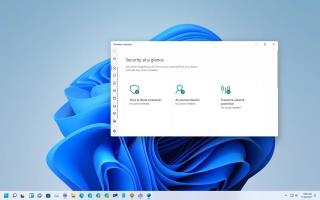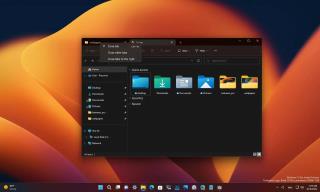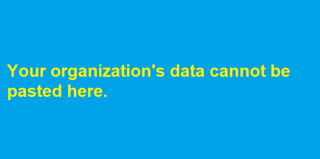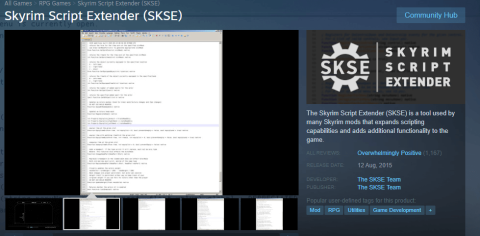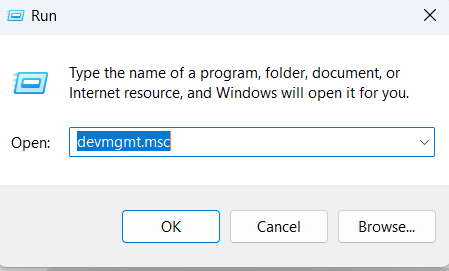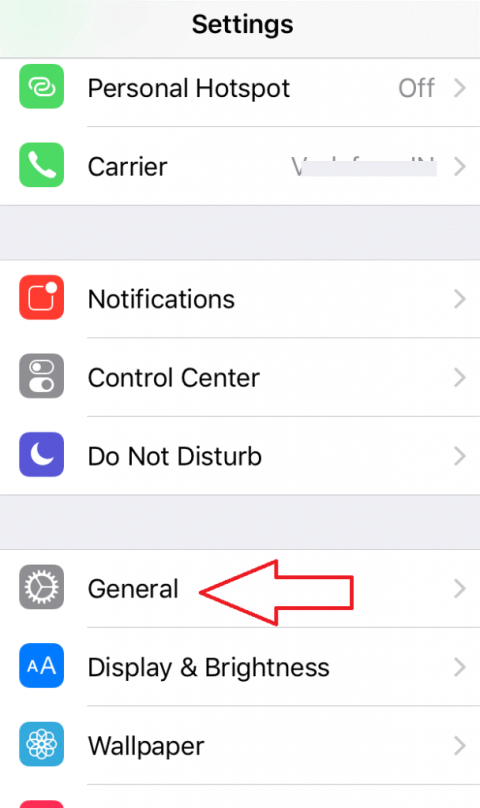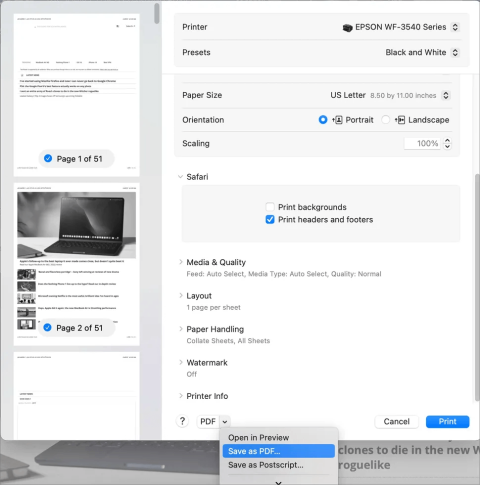Windows 11 artık Beta Kanalında mevcut

Microsoft, Windows 11'in ilk beta sürümünü zorluyor.

GÜNCELLEME 1/5/2022: Windows 11 (sürüm 21H2) 5 Ekim 2021'de piyasaya sürüldü ve güvenliği, üretkenliği artırmak ve tüm deneyimi modernize etmek için yeni özellikler ve geliştirmeler sunan yeni nesil Windows'u temsil ediyor.
Bu sürümde, Başlat menüsü, Görev Çubuğu, Ayarlar ve Dosya Gezgini için yuvarlatılmış köşeler, güncellenmiş yazı tipleri ve tüm bileşenlerde tutarlı tasarım dahil olmak üzere önemli UI değişiklikleri bulacaksınız.
Bu yeni bir sürüm olmasına rağmen, hala Windows 10 teknolojisine dayanmaktadır, bu da uygulamalar ve sürücüler için aynı uyumluluğu koruduğu anlamına gelir. Ancak bu sefer, Windows 11 sistem gereksinimlerini artırıyor ve birçok cihazı yükseltme şansı olmadan bırakıyor.
5 Ekim'de Microsoft, sorunsuz bir yükseltme deneyimine sahip olduğu bilinen Windows 10 çalıştıran yeni cihazlar için Windows 11'i ücretsiz bir yükseltme olarak sunmaya başladı. Zamanla, işletim sistemi donanım uygunluğuna, güvenilirlik ölçütlerine, donanımın yaşına ve diğer faktörlere bağlı olarak daha fazla bilgisayara genişleyecektir. Daha sonra, 2022'nin ikinci yarısında, Windows 11 uyumlu cihazlar için tamamen kullanılabilir olacak.
Önceki sürümler gibi, yeni sürümü Windows Update aracılığıyla manuel olarak indirmeniz için bir bildirim alacaksınız. Bir "arayan" iseniz, Windows Update ayarlarındaki Güncellemeleri kontrol et düğmesini ve ardından İndir ve yükle düğmesini tıklayarak yükseltmeyi zorlayabilirsiniz. Alternatif olarak, yerinde yükseltme veya temiz kurulum gerçekleştirmek için Medya Oluşturma Aracı'nı kullanarak da yeni güncellemeyi yükleyebilirsiniz . Ek olarak, Kurulum Asistanını kullanabilir veya yükseltmek için kullanabileceğiniz bir USB önyüklenebilir ortamı oluşturmak için ISO dosyasını bile indirebilirsiniz .
Windows 11'deki yenilikler
Yeniden tasarlanan Başlat menüsünden ortalanmış Görev Çubuğuna, Eylem Merkezi deneyimine, yeni Widget'lara, Masaüstü Bilgisayarlara, Dosya Gezgini'ne, elden geçirilmiş Ayarlar uygulamasına, temel iyileştirmelere ve daha fazlasına kadar mevcut tüm yeni Windows 11 özellikleri burada.
Yeni Windows 11 Başlat menüsü
Windows 11, Canlı Kutucukları geleneksel simgeler ve yeni bir minimalist tasarım lehine terk eden yeniden tasarlanmış bir Başlat menüsü ile birlikte gelir. Menü, şirketin Windows 10X tasarımına dayanmaktadır. Görev Çubuğunun üzerinde yüzer ve yuvarlatılmış köşeler ve yarı saydam malzemelerle yeni işletim sistemi tarzı tasarımı izler.
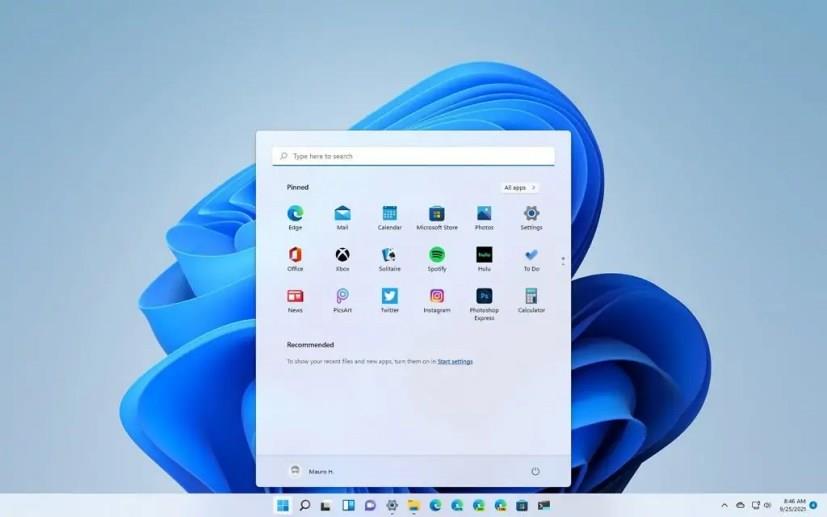
Windows 11 Başlat menüsü
Menü dört bölüme ayrılmıştır. En üstte, Windows 10'dakine benzer , ancak küçük ince ayarlarla Windows Arama deneyimine tıkladığınız anda geçiş yapan bir arama kutusu bulunur .
Sabitlenmiş bölüm, tüm favori uygulamalarınızı içerir ve siz daha fazla uygulama ekledikçe birden çok sayfa içerir. Sağ üst köşede, Windows 10'daki liste gibi çalışan “Tüm uygulamalar” listesine erişmek için bir düğme bulacaksınız.
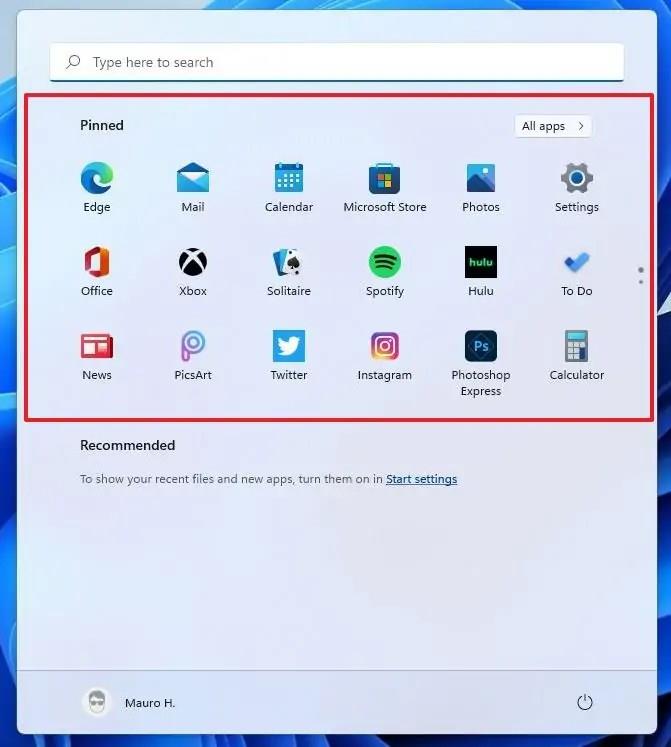
Başlat menüsü sabitlendi
Başlat menüsü artık, belgeler ve klasör konumları da dahil olmak üzere en çok kullanılan öğeleri ortaya çıkaran "Zaman Çizelgesi" gibi çalışan bir Önerilen bölümü içeriyor.
Son olarak, en altta, hesap ayarlarını değiştirme, kilitleme, oturumu kapatma ve kullanıcıları değiştirme seçeneklerini içeren profil menüsünü bulacaksınız. Sağda, güç menüsünün bulunduğu yer burasıdır, ancak seçenekler, cihazın özelliklerine bağlı olarak farklı olacaktır. Kalan alanda, Belgeler, İndirilenler, Ayarlar vb. dahil olmak üzere klasörlere hızlı erişim sağlayabileceğiniz yer burasıdır.
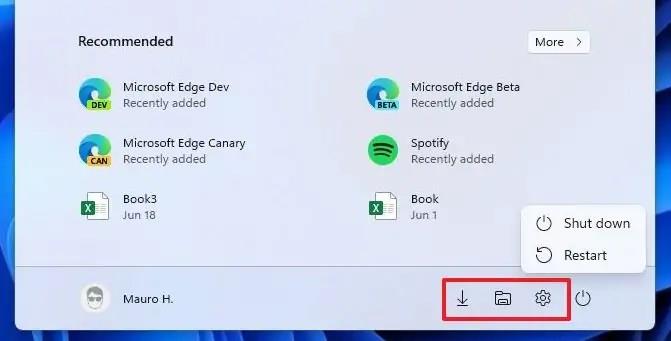
klasör öğeleri
Windows 11'den başlayarak, Başlat menüsü ekranın ortasına hizalı olarak gelir, ancak Ayarlar uygulamasını kullanarak bunu sola hizalayabilirsiniz .

Görev çubuğu ortalanmış ve sola hizalanmış
Uygulamaları bulmayı ve başlatmayı kolaylaştırmak için menüdeki deneyimin çeşitli yönlerini de özelleştirebilirsiniz. Örneğin, uygulamayı "Sabitlenmiş" bölümünde kullanılabilir hale getirmek için yine de sağ tıklayabilirsiniz.

Bağlam menüsünü başlat
Öğeleri istediğiniz konuma, hatta farklı bir sayfaya sürükleyip bırakabilirsiniz. Veya öğeye sağ tıklayıp "En üste taşı" seçeneğini belirleyebilirsiniz. Ayrıca, bağlam menüsünden Başlat veya Görev Çubuğundan uygulamanın sabitlemesini kaldırmak mümkündür.
Uygulamayı kaldırmanız gerekiyorsa, içerik menüsü, yeni bir iletişim tasarımıyla uygulamayı kaldırma seçeneği içerecektir.
“Sabitlenmiş” bölümünde birden fazla sayfa olduğu için fare tekerleğini kullanarak kaydırma yapabilir veya sağ taraftaki noktaları kullanabilirsiniz.
Önerilen bölümü , en son yüklenen uygulamayı, sık kullanılan uygulamaları ve en son açılan dosyaları gösterir. Menünün bu bölümünde nelerin görüneceğine Başlangıç ayarları sayfasından karar verebilirsiniz. Veya her zaman bir öğeye sağ tıklayıp listeden kaldırma seçeneğini belirleyebilirsiniz. Sistemin daha fazla önerisi varsa, son zamanlarda kullanmakta olduğunuz tüm dosya ve uygulamaların bir listesini görmek için Daha Fazla düğmesini göreceksiniz.
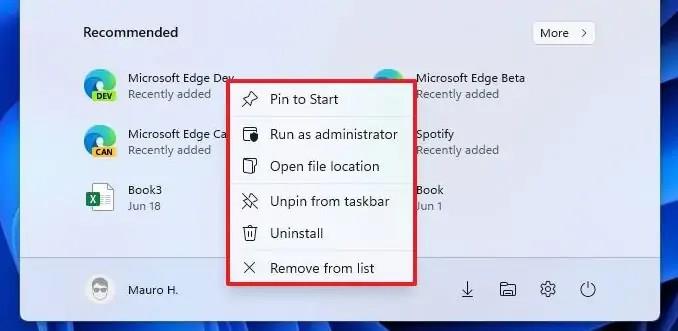
Önerilen öğeyi kaldır
Bu bölümdeki öğeleri kaldırabilseniz de , tüm öğeleri temizlemeye çalışırsanız, sabitlenmiş uygulamalarınızın daha fazlasını görüntülemek için "Sabitlenenler" bölümünü genişletmek yerine alan boş görünecektir.
Bir öğe Başlat'a sabitlenmiş ancak yüklenmemişse, klasik menüye benzer şekilde, tıkladığınızda, uygulama Microsoft Store'dan yüklenene kadar bir yükleme çubuğu görünür.
Yeni Başlat ile ilgili pek çok iyi şey olsa da, menüde klasik deneyimin birçok özelliği ve esnekliği bulunmuyor. Örneğin, yeni tasarımdaki en önemli değişikliklerden biri, Canlı Kutucukların artık mevcut olmamasıdır. Sonuç olarak, boyutu değiştirme seçeneği de ortadan kalktı.
Artık Başlat menüsünü tam ekranda kullanma seçeneğiniz yok. Menüyü fare ile yeniden boyutlandıramazsınız veya Ayarlar uygulamasında boyut değiştirme seçeneği yoktur. Uygulamaları klasörler halinde gruplama özelliği artık yok ve varsayılan olarak, yüklü uygulamalardan ayırt edilmesi zor olan birkaç reklam benzeri uygulama ile birlikte geliyor.
Ayrıca, "Tüm uygulamalar" listesinde, "Windows Yönetimsel Araçlar" klasörü, Denetim Masası'nda Windows Araçları sayfasını açan "Windows Araçları" seçeneğiyle değiştirilmiştir. Sayfa, Windows Yönetimsel Araçlar, Windows Donatıları, Windows PowerShell ve Windows Sistem klasörlerinde bulunan tüm seçenekleri birleştirir.
Yeni Görev Çubuğu
Benzer görünse de, Görev Çubuğu yenidir. Fark edeceğiniz ilk şey, Görev Çubuğunun artık ekranın ortasına hizalanmış olmasıdır. Yeniden tasarlanan deneyim ayrıca yeni bir Başlat düğmesi ve Arama, Görev Görünümü, Pencere Öğeleri ve Sohbet gibi çeşitli özelliklere erişmek için yeni düğmeler içerir.

Windows 11 Görev Çubuğu düğmeleri
Görev Çubuğundaki düğmeleri kaldıramazsınız, ancak bunları Görev Çubuğu ayarları sayfasından gizleyebilirsiniz.
In addition to the new design, the Taskbar has new animations for many actions, including when installing, maximizing, minimizing, and launching an app. And there is a new bouncing animation for apps as the account loads during startup. Under the app button, you will now see a pill-shaped indicator that changes size for running apps to indicate where they are minimized or maximized.
On Windows 11, the Taskbar has excellent and not-so-good changes. For example, the experience is now aligned to the center by default, but it’s possible to change the alignment to the left by modifying the settings.
The interface is a little taller than before, and elements such as, tooltips, previews, overflow menu, and hovering over buttons now follow the new design style with rounded corners and materials.
If an application requires attention, the flashing will be more subtle, it will stop, and there’s a new backplate with a light red color and red pill icon informing that the app requires attention.
Snap groups
Windows 11 also includes new multitasking improvements, including “Snap groups,” which is a feature that allows you to hover an app that belongs to a set of windows snapped in the screen to switch to snapped group without having to re-snap anything quickly. This feature is handy when you are working with multiple windows, and then you suddenly switch to another app, and then you want to switch back to the group of snapped windows.

Snap groups
In addition, the Taskbar no longer includes a search box. Instead, you will find a Search button to open the Windows Search experience, which remains the same as the one available on Windows 10.
Redesigned system tray
The Taskbar also has a redesigned system tray that groups related icons into a single button to open the new “Notification Center” and “Quick Settings.” For instance, clicking the group that includes the network, volume, and battery icons will open the Quick Settings flyout.
And clicking the time and date and notifications icons will open the Notifications Center flyout.

System tray
You can also right-click each item to open its context menu to access the different available options.
The main Taskbar context menu has been removed from Windows 11, and it’s been replaced for a single option to open the Taskbar settings page, where you can configure various aspects of the experience.

Taskbar context menu
You can show or hide buttons on the settings page, control the icons that appear in the system tray and corner overflow, change the Taskbar alignment, and enable or disable auto-hide for the Taskbar. And there’s even an option to hide the show desktop button.
Design issues
While trying to simplify the experience, it appears that Microsoft is making the Taskbar less flexible. For example, the interface is now locked at the bottom, and you cannot move it to the top, left, or right side of the screen. (If you want to relocate the Taskbar, you need to use a workaround.)
You can no longer drop apps or files to pin the items to the Taskbar.
The ability to show labels for applications is gone, and you are now left only with the icon view.
It’s no longer possible to change the size of the icons, nor can’t the height of the Taskbar.
The option to hide the date and time is gone, and opening the Notification Center will no longer show time with seconds. Also, the time will only appear in the primary display.
Finally, you can no longer hide system icons from the system tray, such as network, volume, power, etc.
New Notification Center and Quick Settings
Action Center is no longer a thing on Windows 11. Instead, you now have two new experiences, including “Notification Center” and “Quick Settings.”
Notification Center
Clicking the group of icons with the time and date and notifications or using the Windows key + N keyboard shortcut will open the Notification Center.
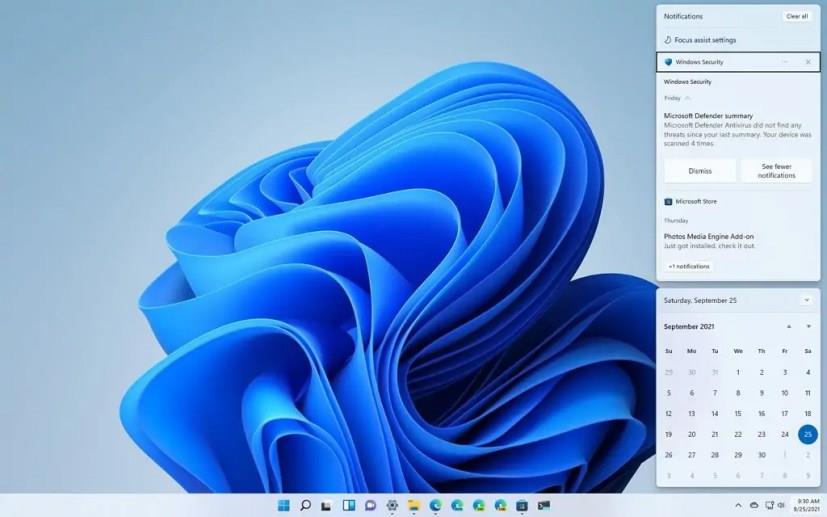
Notification Center
The interface features two stacked groups that use the new style design with rounded corners and semi-transparent materials.
At the top, that’s where you find all your notifications. The interface may look different, but it works the same as the experience found on Windows 10. If you have more than one notification from the same app, the system will only show the most recent, hide the reset, and let you know the number of messages you haven’t seen.
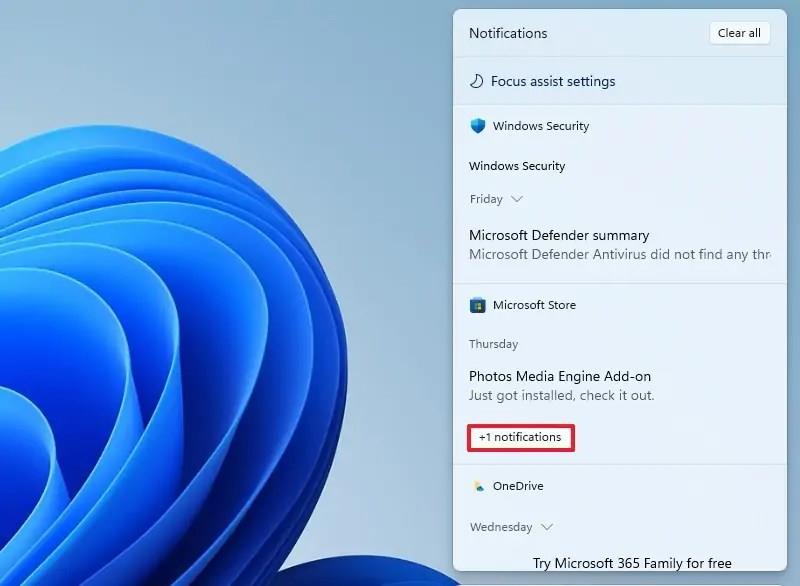
Notification list
At the bottom, you will find the calendar with the current date at the top, but without the time. Unlike the calendar in previous versions, this one will not show upcoming events, nor you can create new events directly from this interface.
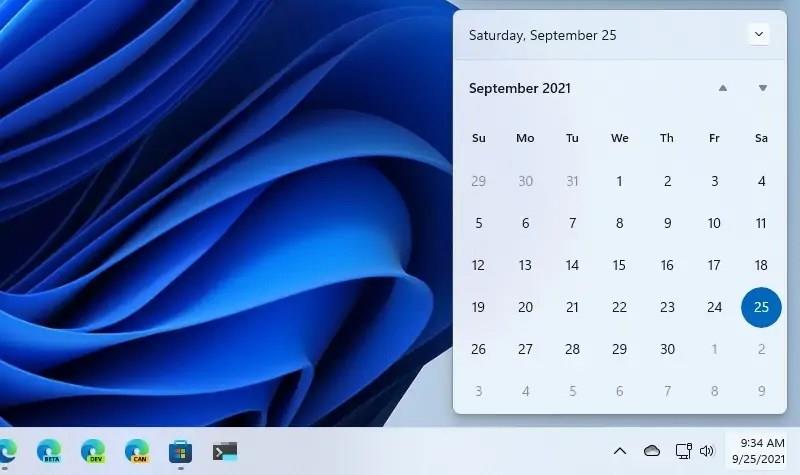
Calendar flyout
If you need to access the notification settings, you can always right-click the notification icon and choose the Notifications settings option. Or you can click the Focus assist settings option at the top.
Quick Settings
On Windows 11, you can open Quick Settings by clicking the network, volume, and power group of icons or using the Windows key + A keyboard shortcut.
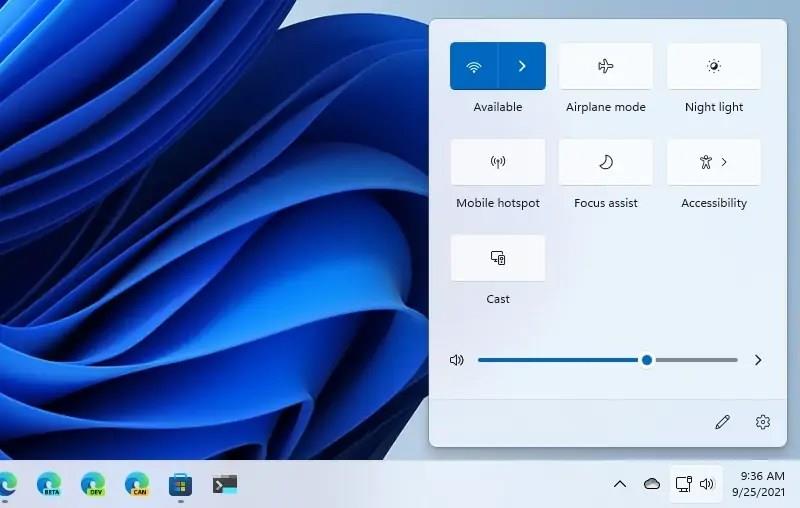
Quick Settings
The flyout lets you control quick settings like Wi-Fi, Bluetooth, Airplane mode, Battery saver, Focus Assist, Accessibility, Night light, Cast, Keyboard layout, Mobile hotspot, Nearby sharing, and Project. Also, depending on the feature, you can open a submenu with the option to control the experience further. For instance, clicking the button next to Accessibility will allow you to enable or disable the Magnifier, Color filters, Narrator, Mono audio, and Sticky keys.
If the feature is available, you can also control brightness and adjust the system volume.
In the interface, you will also find the battery level, option to edit the items you want to see in the layout, and quick access to the Settings app.
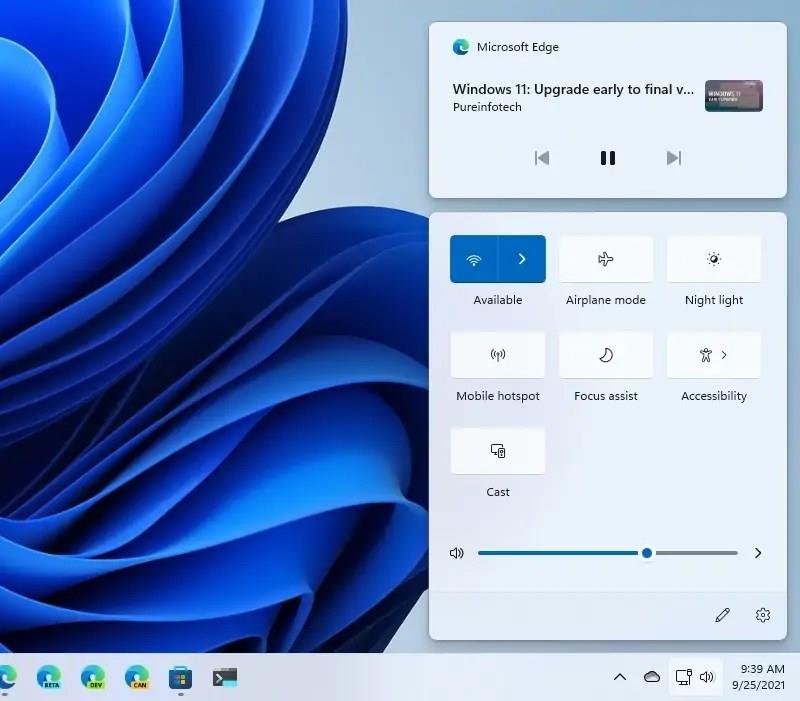
Quick Settings media controls
On Windows 11, above the Quick Settings flyouts, you will also find media controls when playing videos in Google Chrome, Microsoft Edge, or supported media apps.
Windows 11 Widgets feature
Windows 11 includes a feature called “Widgets,” a new interface that slides in from the left side of the screen to provide different types of information, such as weather, news, tracking, sports, entertainment, and more.
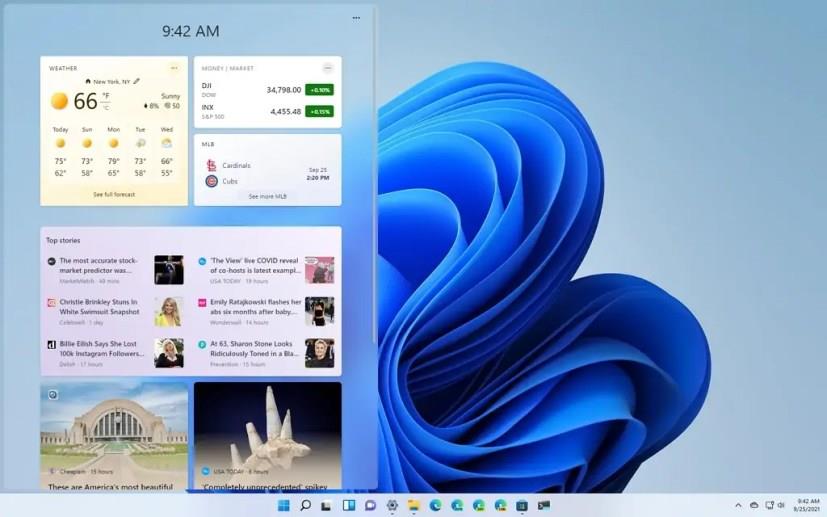
Windows 11 Widgets
If this experience looks familiar, it’s because this is the evolution of “news & interests” available on Windows 10.
You can open Widgets with the dedicated button in the Taskbar or using the Windows key + W keyboard shortcut. On touch-enabled devices, you can swipe from the left edge to open the experience.
The interface takes a section of the screen, and it includes the time, search box (powered by Bing and Edge), and then you get two areas, the one that shows your widgets with personal stuff and the personalized feed.
In the personal section, you can have widgets to view the weather, keep track of your Microsoft To-Do lists, get traffic information, Outlook calendar, Sports, and more.
The only caveat is that you will only find widgets created by Microsoft.
You can always add or remove widgets by clicking the Settings button in the top-right corner and selecting the items you want to see.
Then there is the news section powered by AI and customized based on your likings. You cannot rearrange the cards, but you can hide, like, and save for later by clicking the menu button in the bottom-right corner. If you don’t like a story, you can click the “Hide this story” button in the top-right to remove it.
Although you cannot change many settings for the news widgets, you can open the Widgets settings and personalize your News Feed to configure the interests.
Since this is a cloud-powered feature, it will only work when signed in with a Microsoft account. If you sign out, the Widgets interface will appear empty.
Windows 11 Desktops improvements
On Windows 11, “Desktops” is what was previously known as “Virtual Desktops,” and it’s a feature that allows you to create multiple virtual desktops to separate different work like gaming, school, and work.
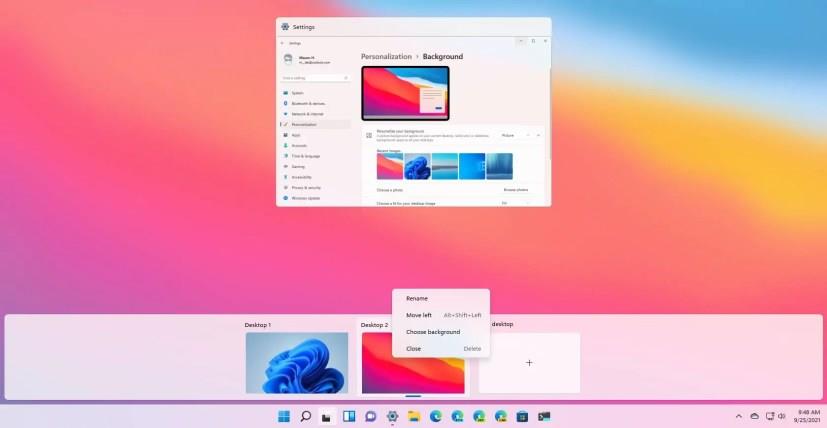
Windows 11 Desktops
The feature works virtually the same as before, but the experience has been redesigned. For example, when you click the Task View button in the Taskbar or use the Windows key + Tab keyboard shortcut, you will find that the Desktops are now available at the bottom of the screen. As before, you will continue to see a list of running applications, but Timeline will no longer be available since it has been removed.
Like the rest of the system experience, the interface follows the same Windows 11 new style designed with rounded corners and semi-transparent materials.
On Desktops, you can reorganize, create, and customize as many virtual desktops as you need, and each one can have a different background to differentiate each space better.
To change the background image, right-click the desktop and select the Choose background option to open the “Background” settings and choose another image file.
The context menu for Desktops also includes options to change the position of the desktop to left or right.
New Snap layouts and Snap groups
As part of the “Snap assist” feature, Windows 11 is introducing two new improvements, including “Snap layouts” and “Snap groups,” to make it easier to organize and work with multiple windows on the screen.
Snap layouts
“Snap layouts” is a feature that, when hovering over the maximize button in File Explorer or other apps, gives you a visual aid to snap windows on the screen using different grids quickly.

Windows 11 Snap layouts
On smaller screens, you will see a set of four snap layouts or six layouts on larger screens. You can also open the snap layouts flyout with the Windows key + Z keyboard shortcut.
While in portrait mode, when snapping windows to the right and left, Snap assist will now position one window at the top and the other at the bottom.
Snap groups
“Snap groups” is a way to switch back quickly to your group of snapped windows when switching to a different app. For example, you can snap together at least two apps. Then if you suddenly switch to another app, you can hover over one of these open apps in the Taskbar to find the snap group and click to switch back.

Snap groups
New Voice Typing app
Windows 11 also has a new Voice Typing app to help you type with your voice. It’s off by default, but you can open it from the voice typing settings or with the Windows key + H keyboard shortcut.

Voice Typing app
The new app has a modern interface and is straightforward. It includes a microphone button to begin typing. And the settings menu lets you customize some options, including the ability to enable an option to launch the experience faster and use auto punctuation.
New Windows 11 File Explorer app
This new version of Windows comes with an updated File Explorer experience. However, it’s not an entirely new application. Instead, this is the same app but with an updated interface.

Windows 11 File Explorer
The design was done using the Windows UI Library (WinUI) that includes new visual elements, animations, and controls that match the style Microsoft is pushing on Windows 11.
Command bar
The new File Explorer ditches the ribbon-style menu in favor of a new minimalist header that combines the title bar and menu into a unified interface that includes the new command bar.
The command bar includes all the new commands to perform the different actions, including Cut, Copy, Paste, Rename, Share, and Delete. And this time around, the icons no longer have labels, which means that you will have to rely on their shape to know the action you want to take.
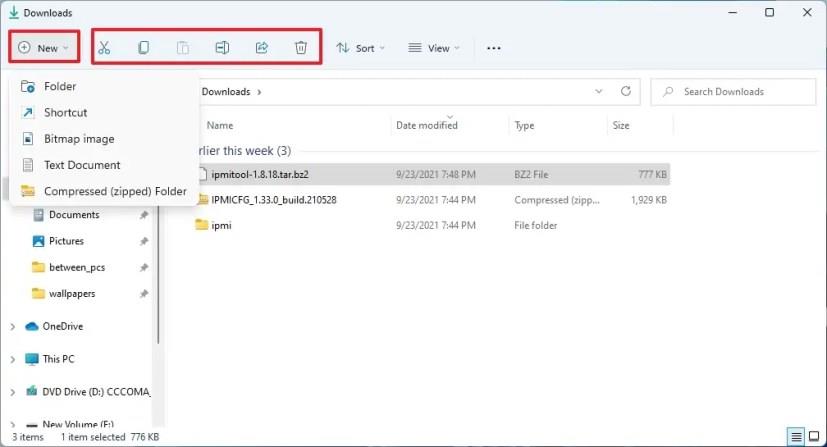
File Explorer command bar
You will also notice the “New” menu that includes all the standard options to create new folders, shortcuts, or documents, which means that you no longer have a dedicated option to create folders. However, you can still use the “Ctrl + Shift + N” keyboard shortcut to create a new folder quickly.
The command bar also includes three new menus, including “Sort and group options,” “Layout and view options,” and “See more.”
The Sort menu houses the options to sort content by name, date modified, type, and more.
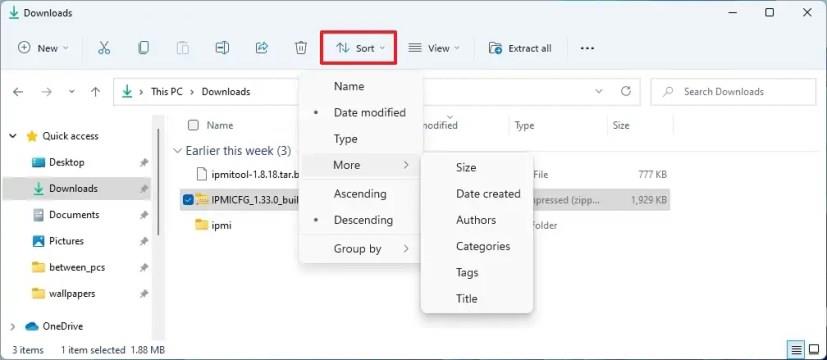
Sort menu
The View menu can show files and folders with different sizes like extra-large, large, small, list, details, tiles, and content. The option to enable the compact view is also located here. The menu also includes the Show submenu that has the options to manage the left pane view, show extensions, or show hidden items.

View menu
Then, the three-dotted is the See more menu that includes the options for selections, compressed to ZIP file, and Options to manage the app settings.
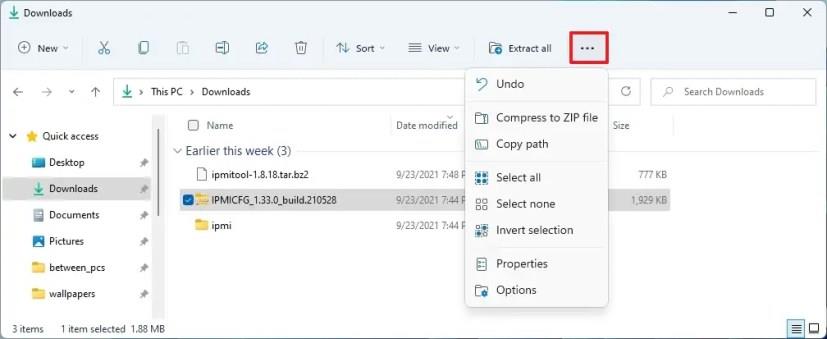
See more menu
These menus will also show different commands depending on your viewing content. For instance, if you are on the “This PC” page, the “See more” menu will also include the options to mount a network drive, but the “New” menu will be grayed out.
Also, if you select a media file like a picture, you will get additional commands like in the legacy version of the app.
Context menu
File Explorer for Windows 11 also introduces a new context menu style. You will see this menu when right-clicking a file or folder. The context menu includes a row with common commands like Cut, Copy, Rename, Share, and Delete, and below, you will find the options you can use with that specific file.
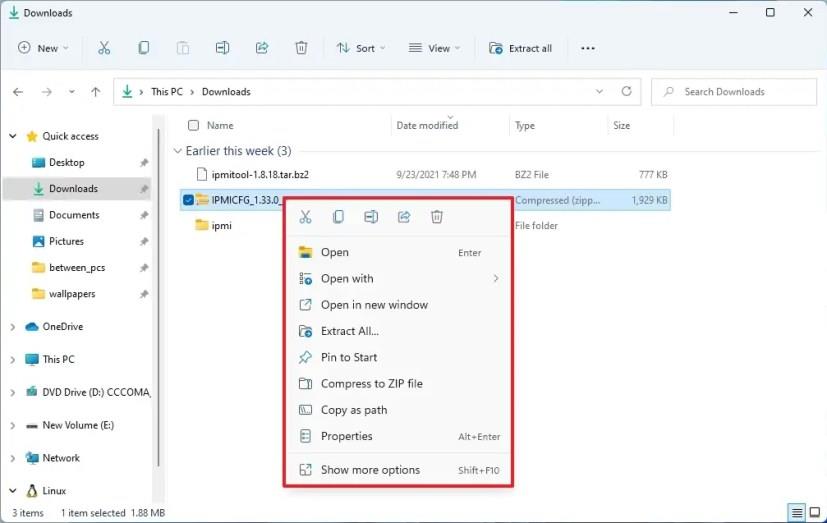
File Explorer context menu
Similar to other elements across Windows 11, the context menu follows the new design language with semi-transparent materials and rounded corners. The legacy menu is still available if you need some of the old options that are not available in the new menu. You can access the legacy view by clicking the Show more options or using the Shift + F10 keyboard shortcut.
The new context menu is also available throughout Windows 11, including for the Desktop context menu.
Scrollbar
File Explorer has a new scrollbar that works the same as before, but it has a thinner design. In the left pane, you will also find a new Linux option. This entry has been designed to give you quick access to Linux files inside distros installed with the Windows Subsystem for Linux.
Share
In this new version, the “Share” interface is getting an update. On Windows 11, when you click the Share button, you will get a new UI with several improvements. For example, you will now see a preview of the items along with the option to enable “Nearby sharing” if it’s not enabled. If the contact you want to send the file or the app is not in the list, you now have an option to select a different app or look up your contacts.

Share UI
New icon
Alongside the new interface, File Explorer also introduces new default icons with new styles, orientations, and colors.

File Explorer new icons
Windows 11 includes new icons for pretty much every element in File Explorer, but the ones you will notice immediately are for the default folders (Desktop, Documents, Downloads, Music, and Pictures). There are three versions for the default folder icon. One shows when the folder is empty, another one slightly different that indicates that folder has files, and you will even find an updated version of the zip folder icon.
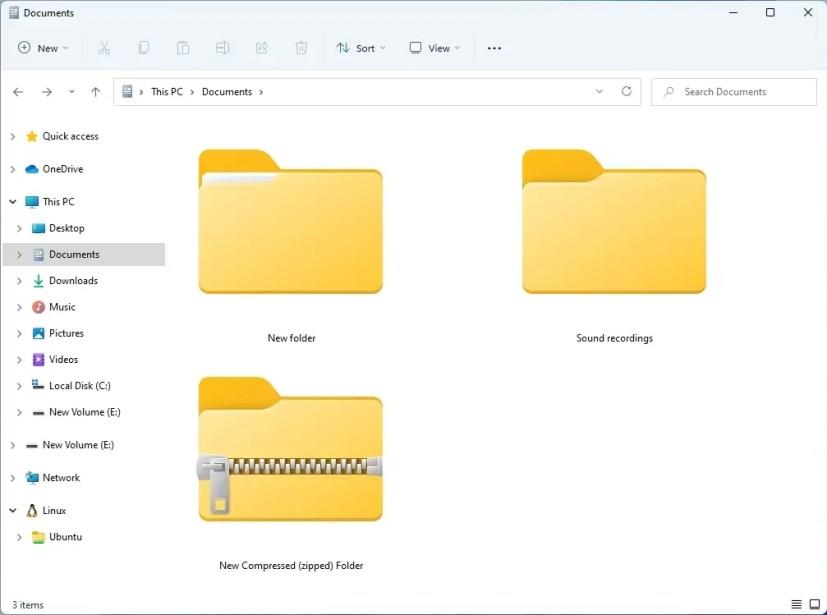
New folder icons
Microsoft has also made icons for other elements like the installation drive, secondary and network storage, This PC, Network, and there are new icons in the “Folder Options” settings.
While the new File Explorer includes many new visual changes, a lot of elements remain virtually unchanged. You will see this when changing settings, using the Format tool, or when trying to mount a network folder.
Other changes with File Explorer for Windows 11 include the “Run with PowerShell” option in the context menu for PowerShell scripts. You will now be able to extract all files from a zip folder that was previously set to online-only content in OneDrive. And when remaining content, it’s now possible to use the CTRL + Delete and CTRL + Backspace to delete words at a time and the CTRL + Left and Right arrow to move the cursor between words within the name.
Clipboard changes and features
Windows 11 introduces a new version of its Emoji Picker that integrates with the clipboard history and supports animated GIFs. This is, in addition, to support for additional languages, kaomoji, and symbols.
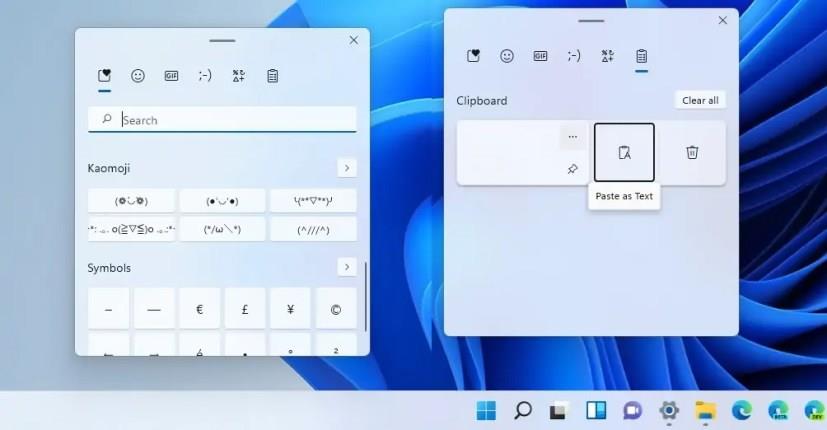
Windows 11 Clipboard UI
The new interface has a modern design using Fluent Design visual elements, such as blur and transparency, and it includes an inline search box to make it easier to discover emojis and animated GIFs.
Since the Emoji Picker is integrating the clipboard history interface, you can now insert emojis and copies from a single experience using the “Windows key + .” or “Windows key +;” or “Windows key + V” keyboard shortcuts.
Starting with this version, you will also find support for Emoji versions 12.1 and 13.0, which brings over 200 new glyphs, and now there are gender-neutral emoji designs.
Furthermore, the clipboard history interface includes options to pin, unpin, delete, paste as text, and individual sync entries.
Finally, if you use the Snipping Tool, when you use the Windows key + Shift + S keyboard shortcut, the capture will now be stored in the Clipboard to paste it on any folder to save the screenshot as a .png file.
Task Manager improvements
As part of the Task Manager improvements, Windows 11 now classifies and shows all the processes from Microsoft Edge. The classification is divided into several elements: Tabs, Browser processes (Browser, GPU Process, Crashpad), Utility plugins (Utility: Audio Service Extensions), and Dedicated & Service workers, and more.
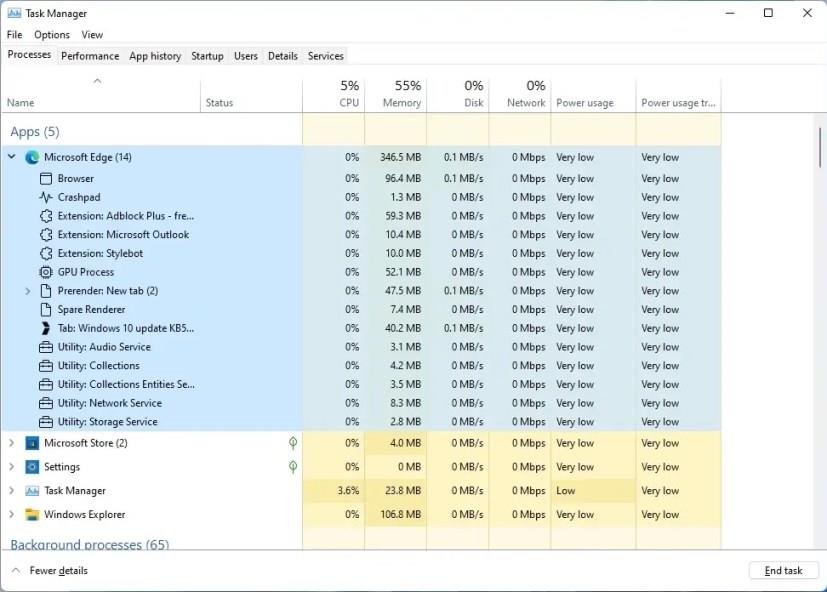
Task Manager Edge classification
You will also see that each process classification is described with an icon to make it easier to identify. If you are viewing a website tab in the processes, it will include the site icon.
Auto-HDR for gaming and DirectStorage
Windows 11 also comes with “Auto HDR for games,” a new feature that has been designed to improve the gaming experience by automatically converting compatible titles from standard-dynamic-range (SDR) to high-dynamic-range (HDR) to unlock the brighter and bolder colors available on compatible displays that use this technology for a more immersive and realistic experience.
Once you enable the feature, you will get a more immersive and realistic gaming experience with an increased range of color and luminance in more than 1000 DirectX 11 and DirectX 12 PC games.
Although this is one of the biggest features on Windows 11, it’s only supported on specific hardware, which means that you will need a monitor that supports HDR. You can use this guide to learn the steps to enable the feature.
DirectStorage is a new technology that allows games assets to load faster to the graphics card without bugging down the processor. In other words, this means faster load times and more detailed game worlds. (This feature will require the latest NVMe drives and optimization by the game developers.)
Also, Windows 11 now supports DirectX 12 Ultimate. DirectX 12 is the technology standard for creating and managing gaming, images, and multimedia (such as visual effects and audio effects) that run on Windows-based devices.
New Windows 11 Settings app
In addition to the new features and changes, Windows 11 also includes a new version of the Settings app. The new experience to customize the look and feel and configure system settings features a new redesigned interface, regroups and integrates new settings, ports more features from Control Panel, removes the homepage, and a lot more.

Windows 11 Settings app
As part of the new experience, the app includes rounded corners, a semi-transparent interface, and modern and colorful icons.
The navigation system is similar to the one available on Windows 10, but now there are more options, and the settings are grouped using different logic.
When you open Settings, you will notice that you are taken directly to the “System” section, and that’s because this version ditches the homepage.
Also, when you open a new section, the pages will be listed on the right side instead of the left.
As you drill down through the pages, at the top, you will find the new breadcrumbs that will indicate your current location in the app. You can click each breadcrumb to jump back to a previous page. The setting pages can also show hero controls for frequently used settings or a specific feature.
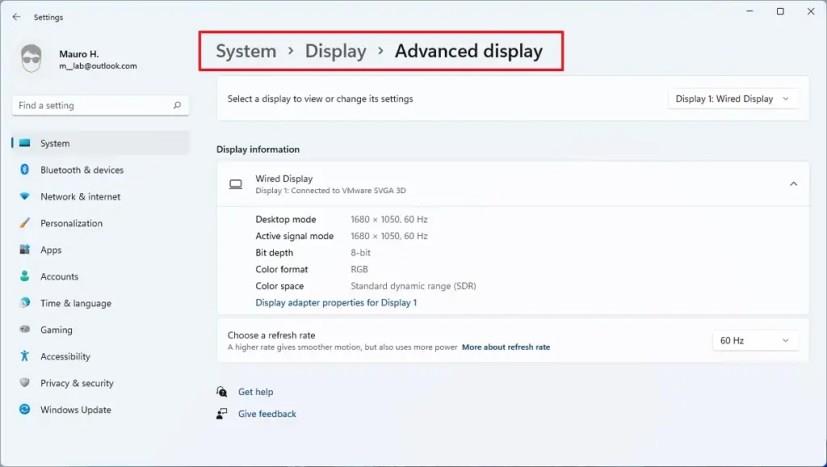
Settings breadcrumbs
Finally, the new Settings app can now recommend settings adjustments based on their current state.
System settings
The System section is the new default page when you open the Settings app. It now includes the pages to adjust many settings, including Display, Sound, Notifications, Focus assist, Power, Storage, Nearby sharing, as well as Multitasking, Activation, Troubleshoot, Recovery, Projecting to this PC, Remote Desktop, Clipboard, and About.
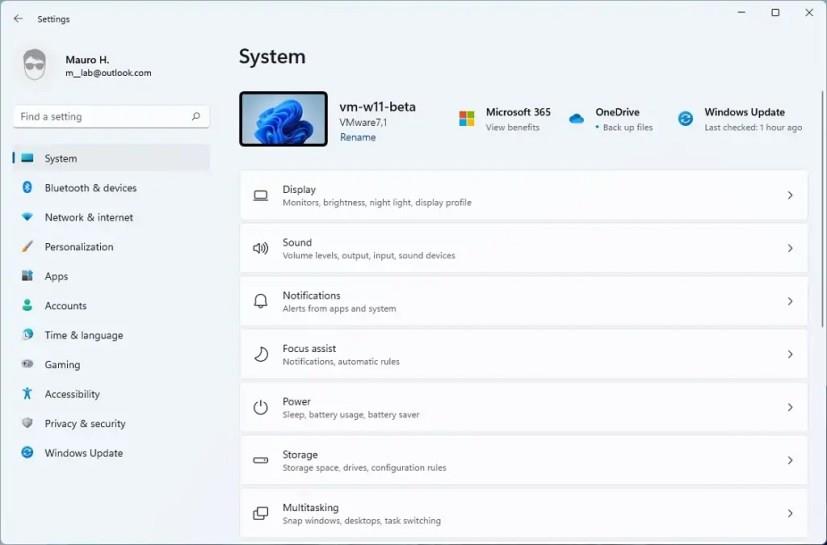
System section
Also, the hero controls in this section include desktop preview, device name, and option to rename the system, and you will find icons with the status of OneDrive and Windows Update.
Display
On the “Display” page, the Scale & layout section introduces new settings to remember window locations based on monitor connection and window locations based on monitor connection to improve the experience when working with more than one monitor.

Multiple displays
These settings are part of a new experience on Windows 11 that allows you to restore apps automatically to their original location when reconnecting an external monitor.
You will notice a new “Automatically adjust contrast based on the display content to help improve battery” option, under the Brightness setting, to disable content adaptive brightness control (CABC) on Windows 11.
In the “Advanced display” page, there is a new option (Dynamic) to enable the new Dynamic Refresh Rate (DRR) feature in the refresh rate setting.
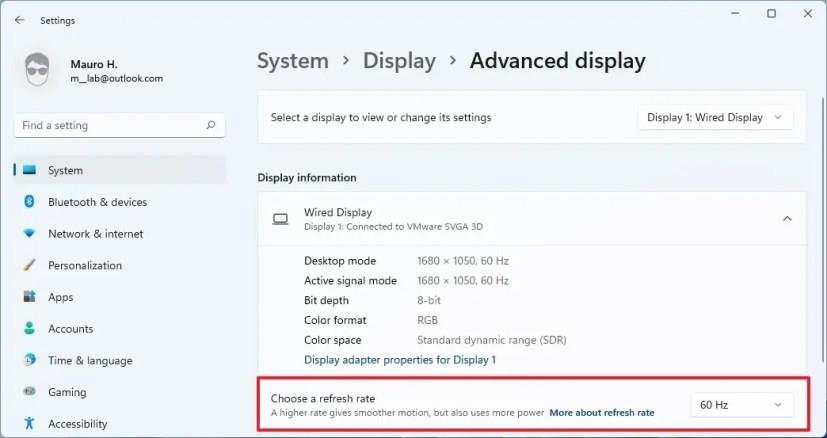
Dynamic refresh rate
If you choose this option, Windows will automatically lower or increase the display refresh rate to reduce the power consumption on supported hardware.
Also, if the display is certified as HDR, you will know this information on this page.
On the “Graphics” page, there is a new search box and list of apps you may want to customize.
Also, the Night light page is not getting new settings, but when turning the night light on or off manually through the Settings app or Action Center, the feature will now turn off immediately rather than using slow transition.
Sound
On the Sound page, you will find an option to enable mono audio for people with difficulty hearing, and there is an option to pair output devices quickly.
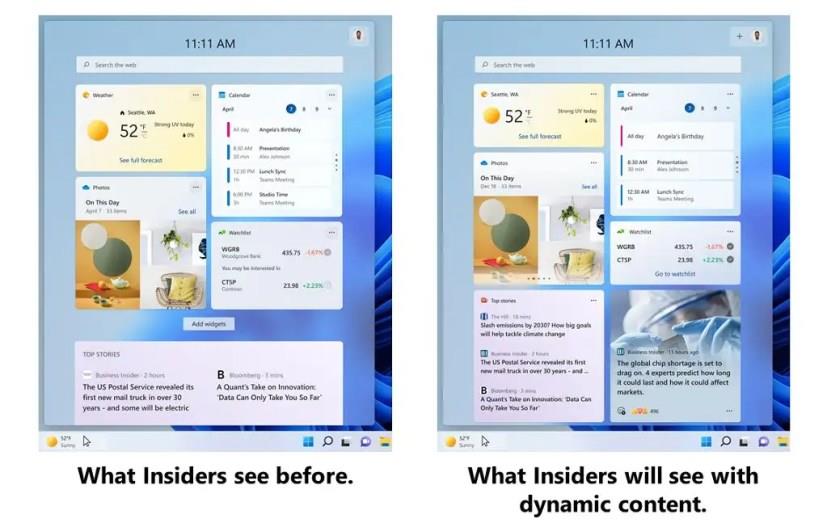
Mono audio
Under the “Advanced” section, you will find a new option to access all the sound devices, troubleshoot, and others.
The “App volume and devices preferences” page has become the “Volume mixer.” The page still has all the same settings, and it replaces the legacy Taskbar volume mixer menu.
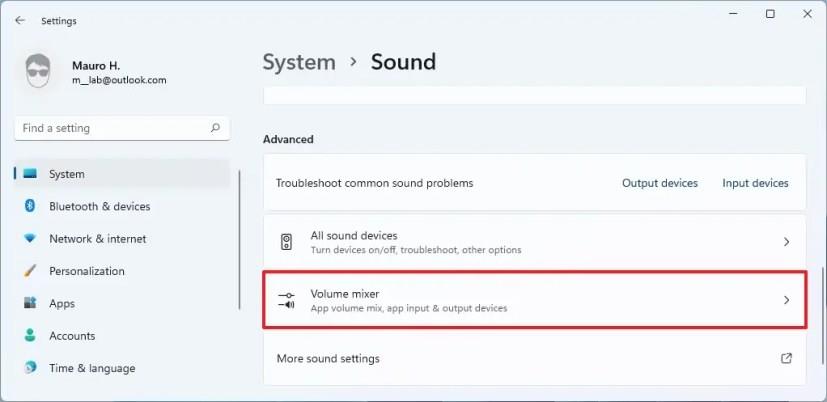
Windows 11 Volume mixer
The Properties page for devices has been redesigned with high-quality icons, driver information, and new settings.
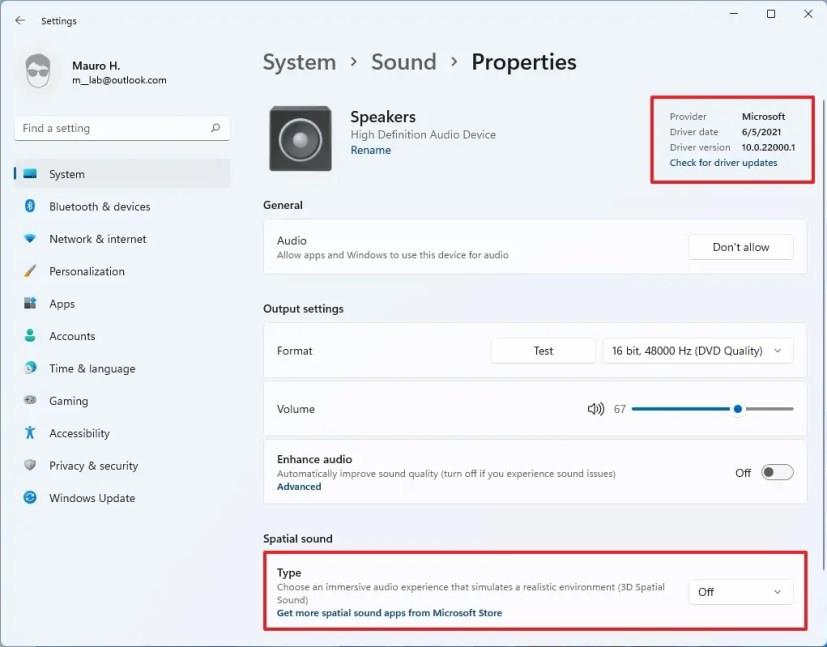
Sound properties
The Speakers page now houses permissions to allow or deny apps access to the output device. You can choose the audio format, adjust the volume, and enable Spatial sound. Also, you can now rename the device, see the driver information, and check for driver updates.
Notifications
On the Notifications page, you only have three settings, and there’s an option to access the “Focus assist” settings page.
Power & battery settings
The Power & battery page now displays the battery usage over time.
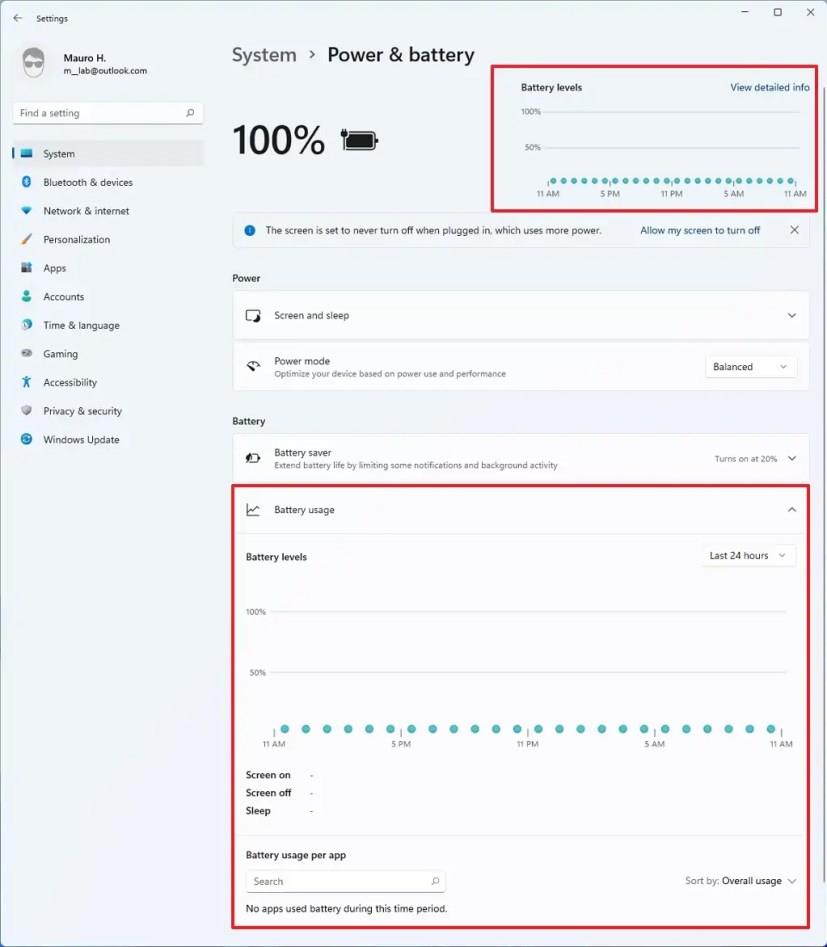
Power & battery settings
Storage
The Storage page has been updated with new features, and the information about the system drive is now front and center.
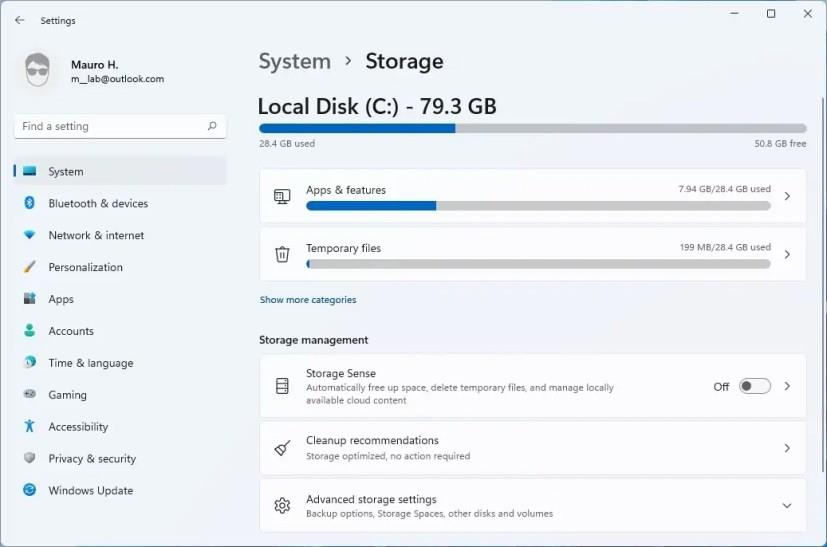
Windows 11 Storage settings
Storage sense is now located under the “Storage management” section. The only change on the Storage sense page is the new option to run the cleanup of temporary files automatically.
The Windows 11 Storage sense has a new feature known as Cleanup recommendations that shows how many large files and used files, synced files to the cloud, unused apps you can uninstall, and the temporary files you can delete to free up space.
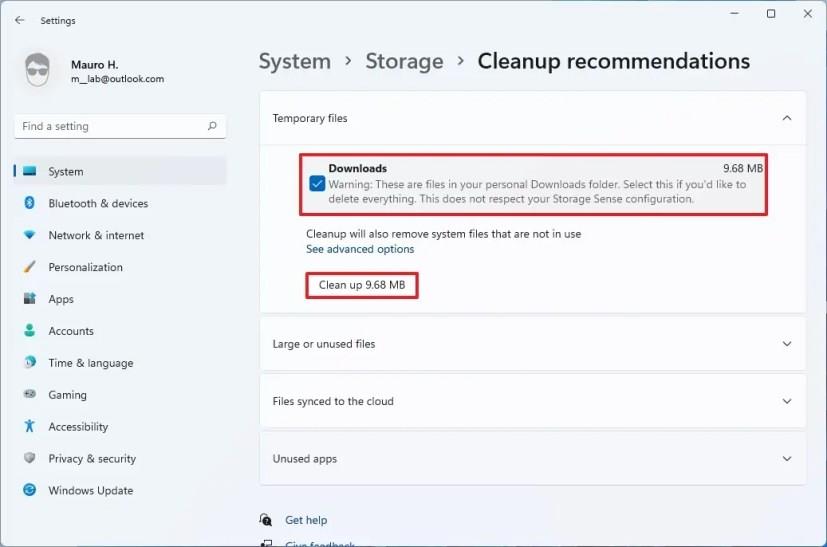
Cleanup recommendations
The feature is straightforward. You only need to select the items and click the “Clean up” button to free up additional space.
In the “Advanced storage settings” section on the main Storage page, you will find the new Disks & Volumes feature that replaces the legacy Disk Management experience.
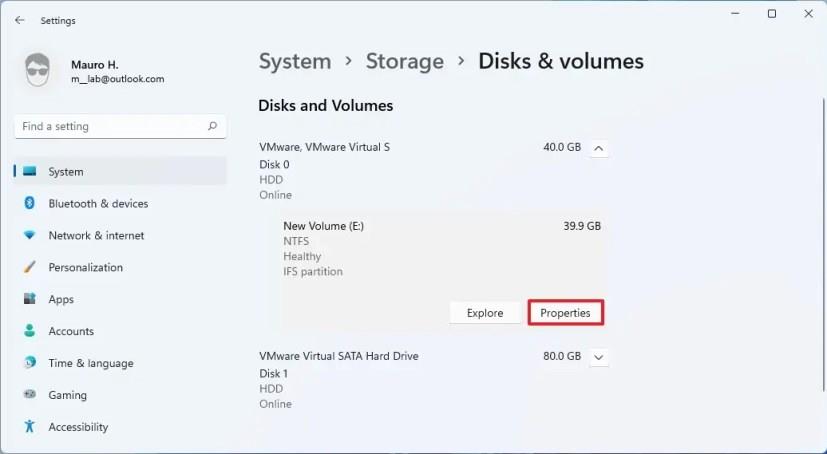
Disks and volumes
Windows already has a tool to manage disks and volumes, but it’s an old control panel experience. The new experience was built from the ground up with modern improvements and accessibility in mind. It also features better integration with features, such as Storage Spaces and the Storage breakdown page.
Like the legacy tool (which is still available), the new tool allows you to view all the drives connected to the device, and you can create, resize, format, and change letters for partitions.
On the page, the disk tool shows all the drives connected to the device with basic information, such as the disk number, media (SSD or HDD), and whether if the drive is online or offline.
You can select the drive and click the Properties button to give you additional information like name, identification, model, media, capacity, and type. You’ll also see the current status and the partition style (for example, GUID Partition Table “GPT”).
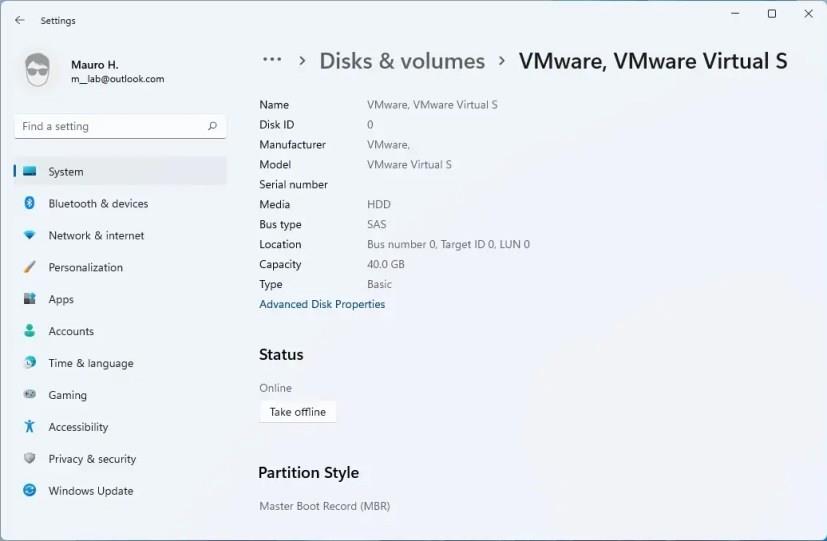
Hard drive information in Settings
The Advanced Disk Properties option opens the properties of the drive with the Control Panel.
While on the main page, if you expand the drive, you will see the list of partitions with rich details, including the file system, partition type, status, and more.
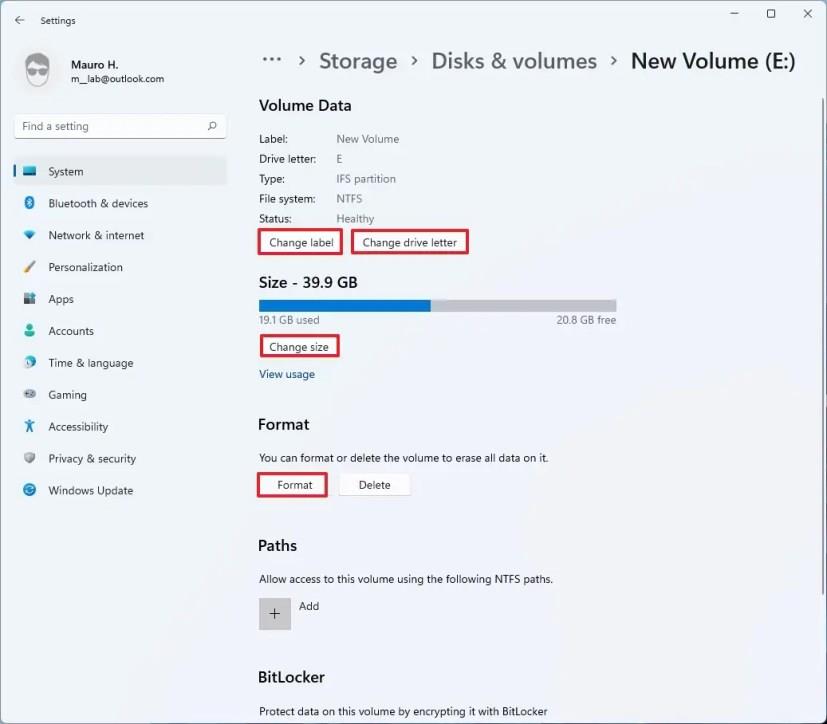
Settings partition info and tools
In addition, the experience includes a health monitor feature to keep tabs on the health of Non-Volatile Memory Express (NVMe) Solid-State Drives (SSDs).
If there is an issue with the drive, you will see a notification to view more details and access the drive to back up the data before it’s too late. The notification will open the drive page, where you can find more information, including the life remaining on the drive, temperature, and available space.
You can select each drive, and clicking the Properties button will access another page where you can change the label or drive letter. You can resize the partition with the Change size button. You can add a path to the volume, and you can even enable BitLocker on the drive.
If you are dealing with an external drive, the properties page will also include options to delete and format the partition, and you can bring the drive online or offline.
Windows 11 is also bringing Storage Spaces to the Settings app. This means you can now create and manage storage pools and spaces, add and remove drives, and optimize pools within the Settings app without opening Control Panel or PowerShell.
Multitasking
On Windows 11, the Multitasking page includes the options to enable and disable Snap layouts, Snap groups, and more.
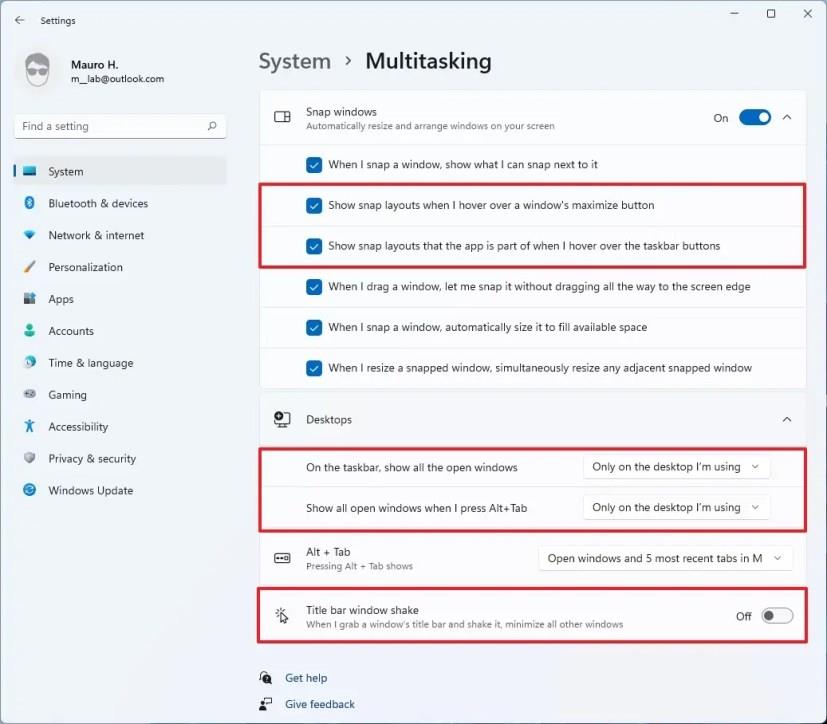
Multitasking settings
Also, the “Virtual Desktops” settings have been renamed to “Desktops,” and the settings are all the same ones as before. And now, the Settings app includes an option to enable or disable the title bar window shake (Aero shake) feature.
Bluetooth & devices settings
The Bluetooth & devices section has also been updated to make it easier to connect peripherals to Windows 11. This section includes the settings to control Bluetooth, Devices, Printers & scanners, Your Phone, Cameras, Mouse, Touch, Pen & Windows Ink, AutoPlay, and USB.
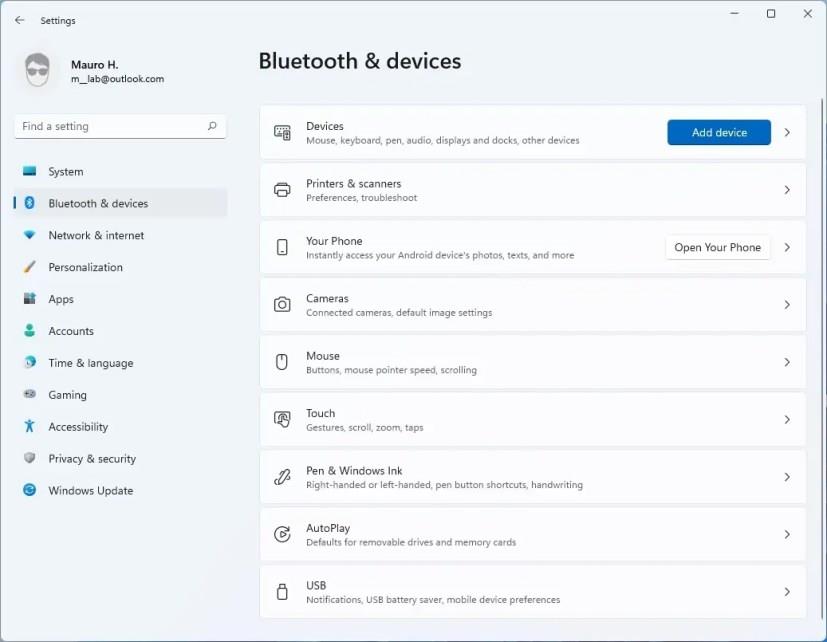
Bluetooth & devices settings
Devices
On the Devices page, you will see a list of the input, output, and other devices connected to your computer. And the Add device will open the wizard to install new peripherals like on Windows 10. If you no longer need a device, you can remove using the peripheral’s menu on the right side.
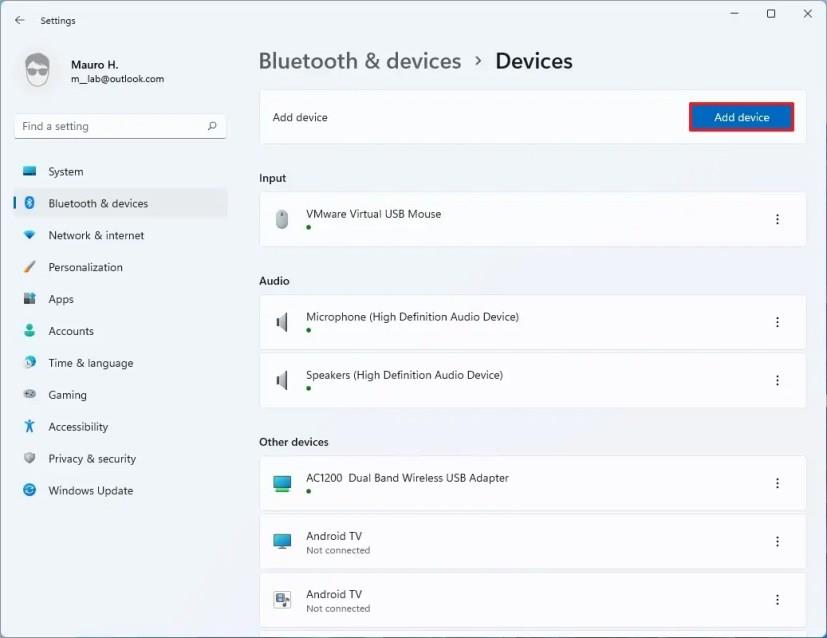
Windows 11 Devices settings
This used to be the “Bluetooth & other devices” page.
Cameras
The Cameras page is new to Windows 11, and it houses the settings to manage webcams and network cameras.
Camera settings
You can manage features like brightness, contrast, rotation settings, and even enable or disable Video HDR and Eye Contact in the camera settings. The Video HDR and Eye Contact features are only available in supported hardware.
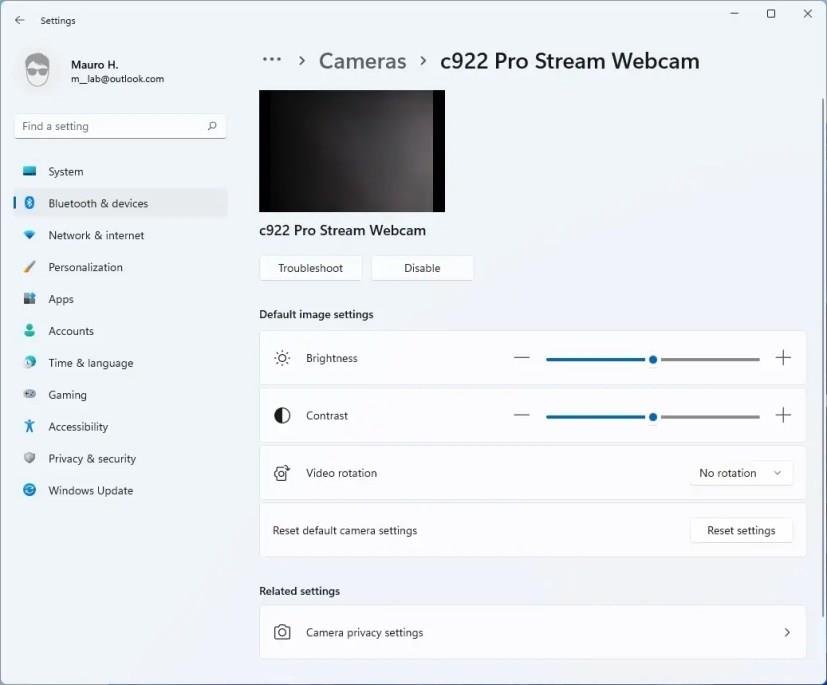
Webcam configuration
Touch
The Touch page is also new, and it’ll be available on devices with touch screens.
Network & internet settings
In the Network & internet section for hero controls, you will see the active network connections, connection properties, and data usage. This part of the Settings app includes the settings for Ethernet, Wi-Fi, VPN, Mobile hotspot, Airplane mode, Proxy, Dial-up, and Advanced network settings.
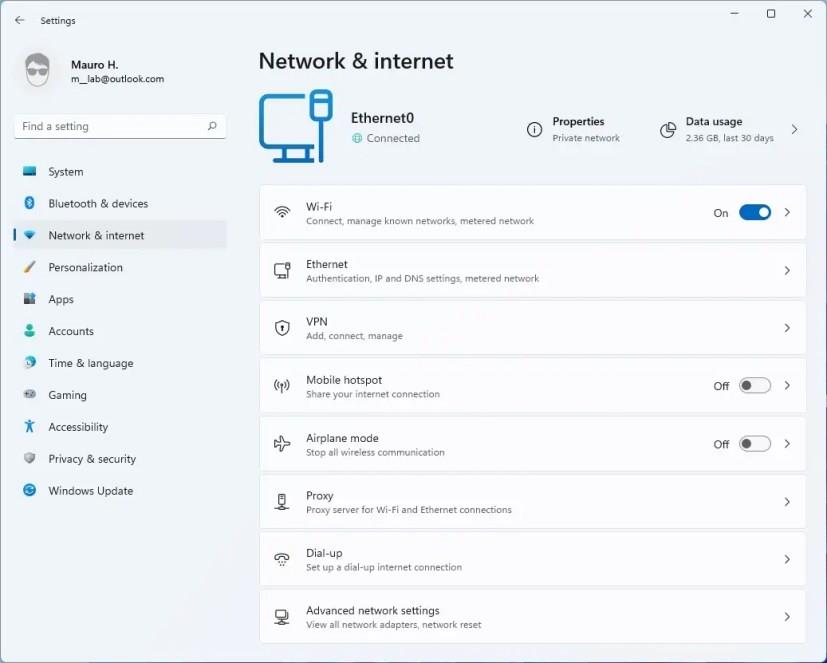
Windows 11 Network & internet
Wi-Fi
The Wi-Fi page isn’t new, but it has been tweaked with an option to view the available wireless networks within the app.
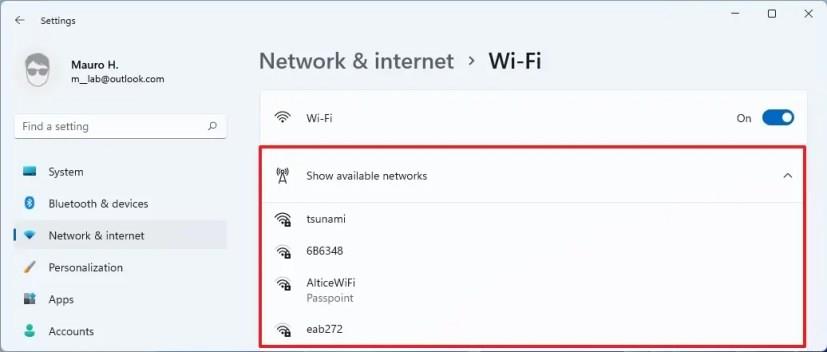
Windows 11 Wi-Fi settings
Ethernet
The Ethernet page now includes an option to set up IEEE 802.1x network authentication settings. (In previous versions, this needed to be done in Control Panel.)
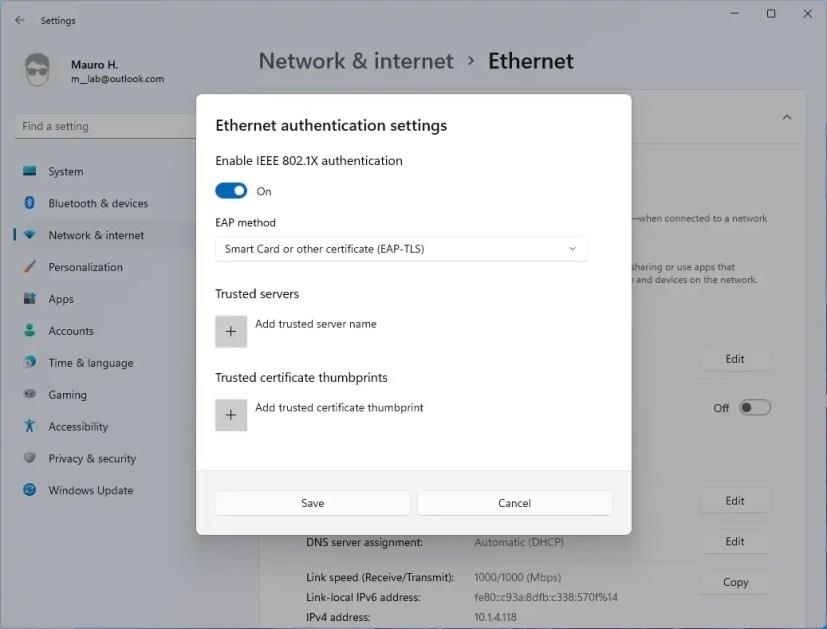
IEEE 802.1X authentication
You can now configure Domain Name System (DNS) without opening the Internet Protocol (IP) configuration page.
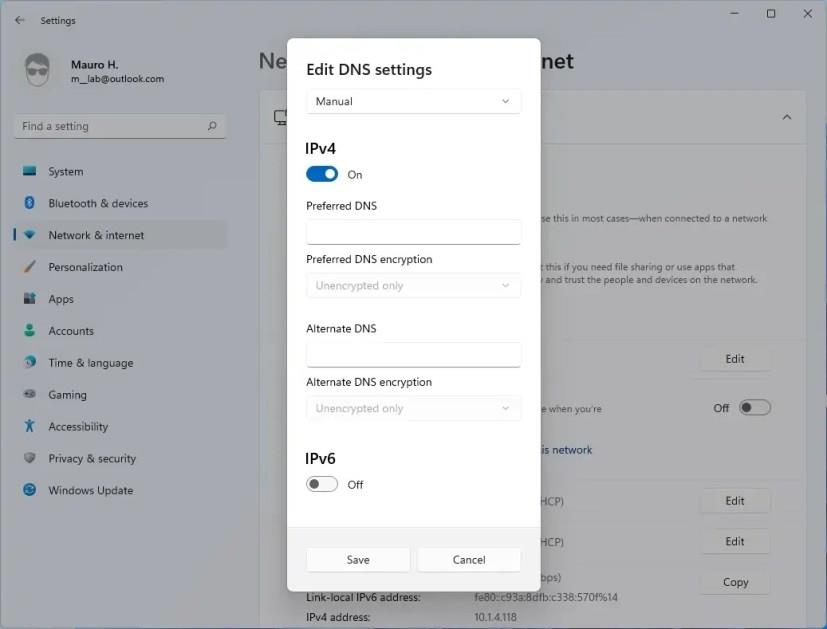
Windows 11 DNS only settings
Finally, starting on Windows 11, you can configure DNS over HTTPS (DoH) to encrypt DNS queries using the Hypertext Transfer Protocol Secure (HTTPS) protocol.
Advanced network settings
The Advanced network settings page is new, and it includes the options to enable or disable, rename, and view the status of network adapters. (In previous versions, this needed to be done in Control Panel.)

Advanced network settings
Personalization settings
While the Personalization section is not new, it has a lot of improvements. For example, the section now shows the six new default themes and a preview of the desktop as hero controls, and it houses the settings for Background, Colors, Themes, Lock screen, Touch keyboard, Start, Taskbar, Fonts, and Device usage.

Windows 11 Personalization settings
Themes
The Themes page is almost identical to the previous version, with the difference that it includes six new default settings.
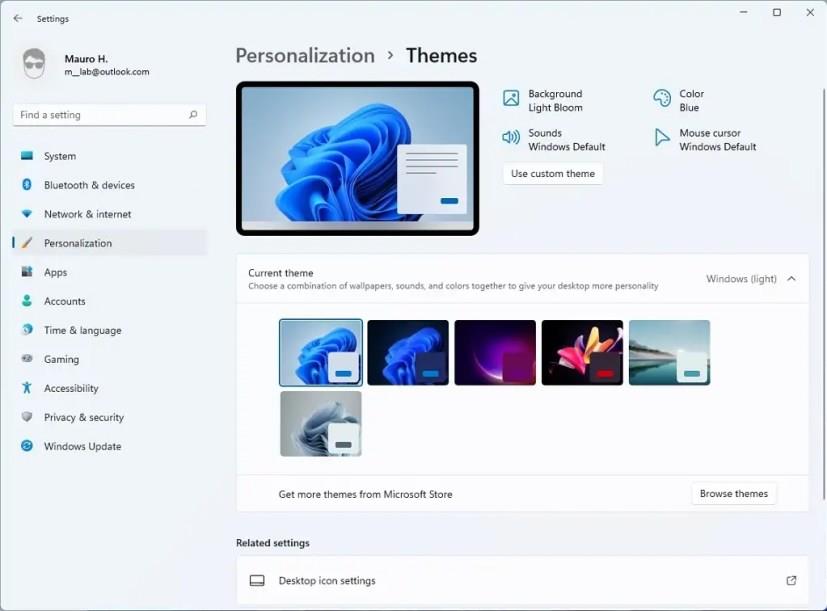
Themes settings
On the Sounds page, you will also find that the “Play Windows Startup sound” option is now enabled by default, and this is because Windows 11 is also bringing back the startup sound again. However, the Windows startup sound will not play after the computer reboots automatically to apply updates.
In addition, you will now find new default sounds for pretty much every action in the latest version of Windows. Microsoft has been created a slightly different sound theme when using the dark mode.
Windows 11 startup sound
You can check out the new sounds by selecting each event and pressing the Test button.
Touch keyboard
The Touch keyboard page is new and houses the settings to adjust the on-screen keyboard, including settings to change the keyboard size, theme with the option to show background and change the size of keys.
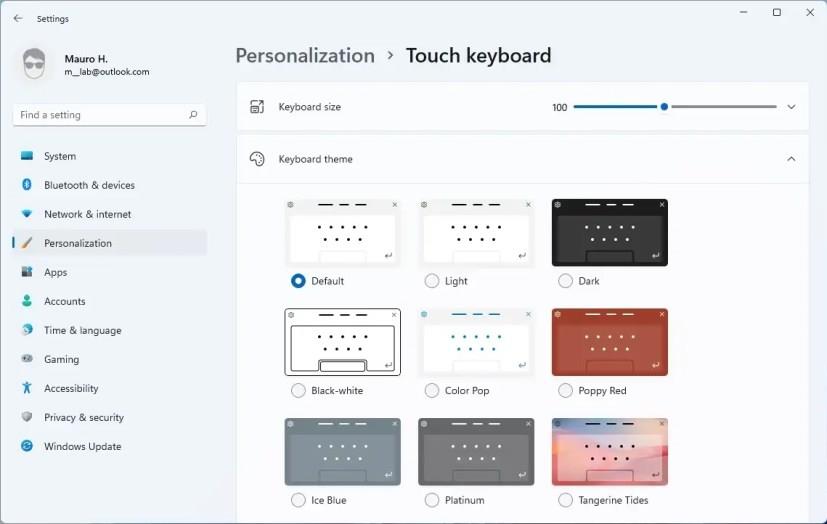
Touch keyboard settings
Start
The Start page includes the new settings to customize the Start menu. For instance, you will now find the options to show or hide recently added and most-used apps. You can also control whether or not to show items in the jump list and the “Recommended” section.
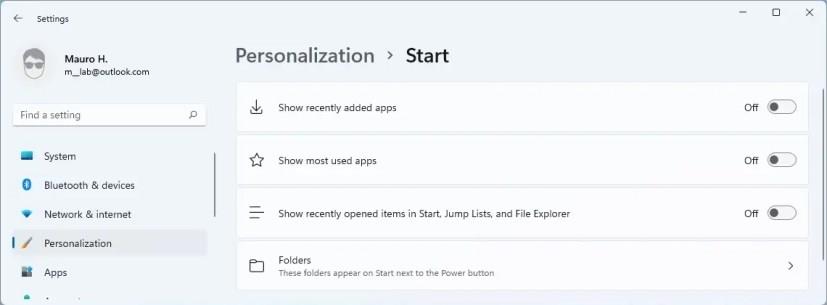
Start settings on Windows 11
In addition, the Folders setting lets you decide what folder (or quick links for File Explorer, Settings, etc.) appear next to the profile menu in the Start menu.
Taskbar
The Taskbar page no longer includes the options to change the Taskbar location, height, or icon size. Instead, the settings reflect the new features, including showing or hiding the Search, Task View, Widgets, and Chat buttons.
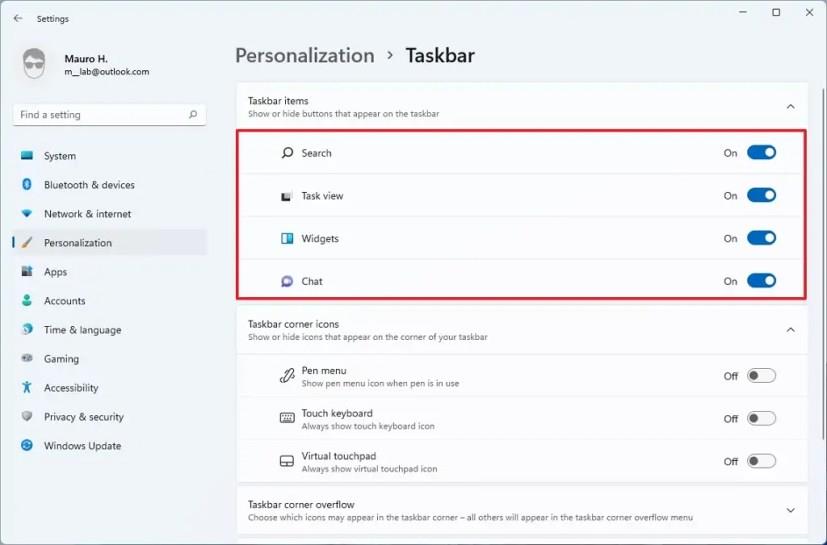
Taskbar settings
You can show or hide the “Pen menu,” “Touch keyboard,” and “Virtual touchpad” buttons that appear in the system tray. Also, you can control which items appear in the overflow menu.
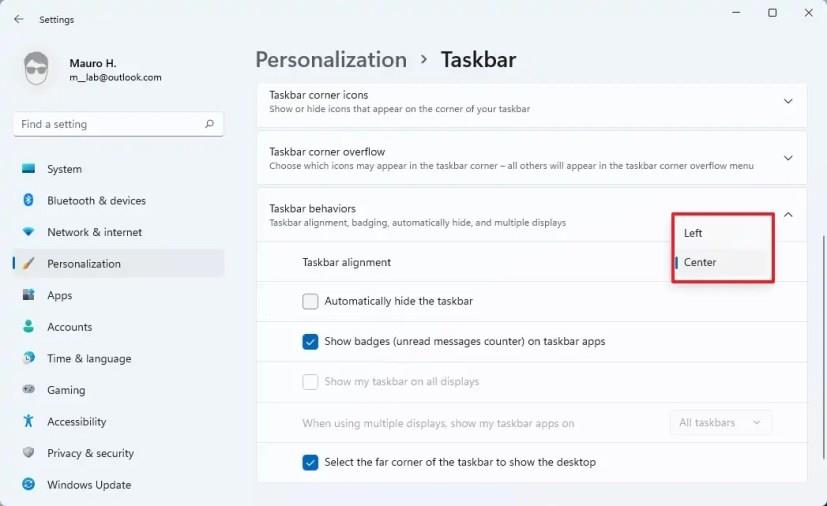
Taskbar behaviors
Finally, in the “Taskbar behaviors” settings, you can change the Taskbar alignment to the left and center. You can also enable auto-hide the Taskbar, show badges for unseen messages, disable the show desktop button, and control the experience in a multiple display setup.
Device usage
The Device Usage is new, and it lets you specify how you plan to use the computer so that Windows 11 can tailor the ad experience.
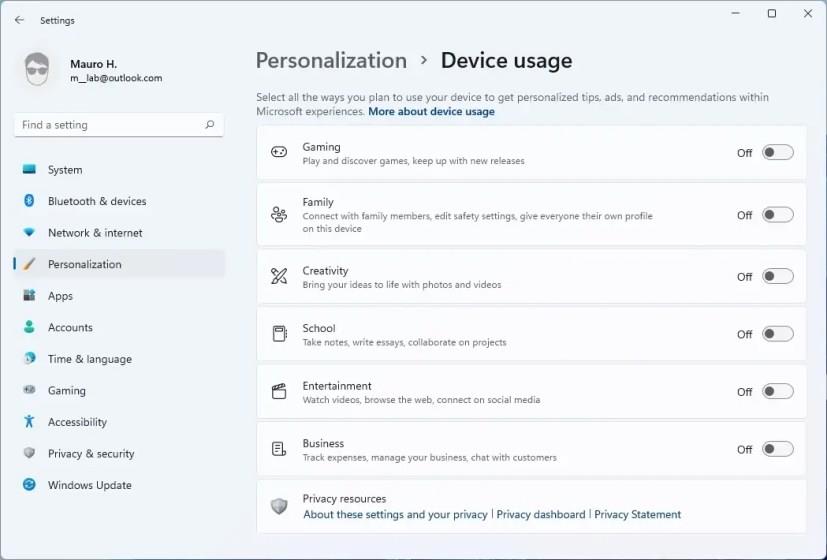
Device usage
Apps settings
The Apps section includes the settings for Apps & features, Default, Offline maps, Optional features, Apps for websites, Video playback, and Startup.
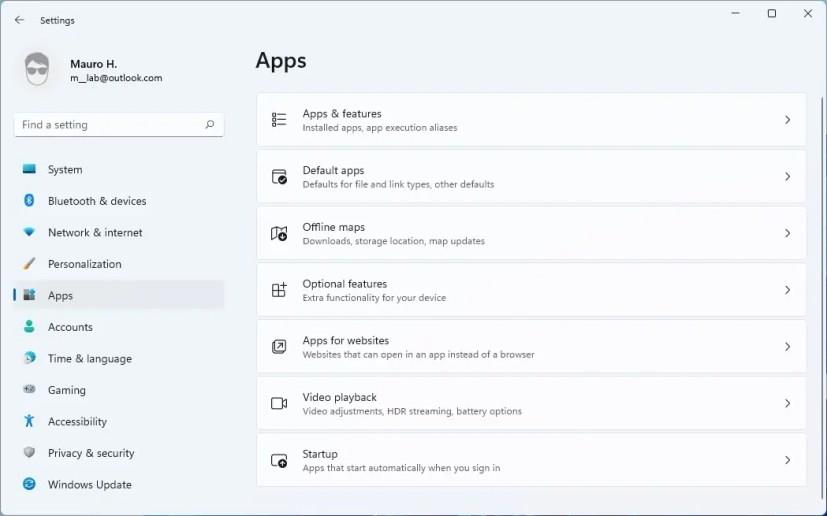
Windows 11 Apps settings
Apps & features
The Apps & features page is not changing significantly, but you will find a new “Share across devices” feature, allowing you to pick up an app you left off on another device.
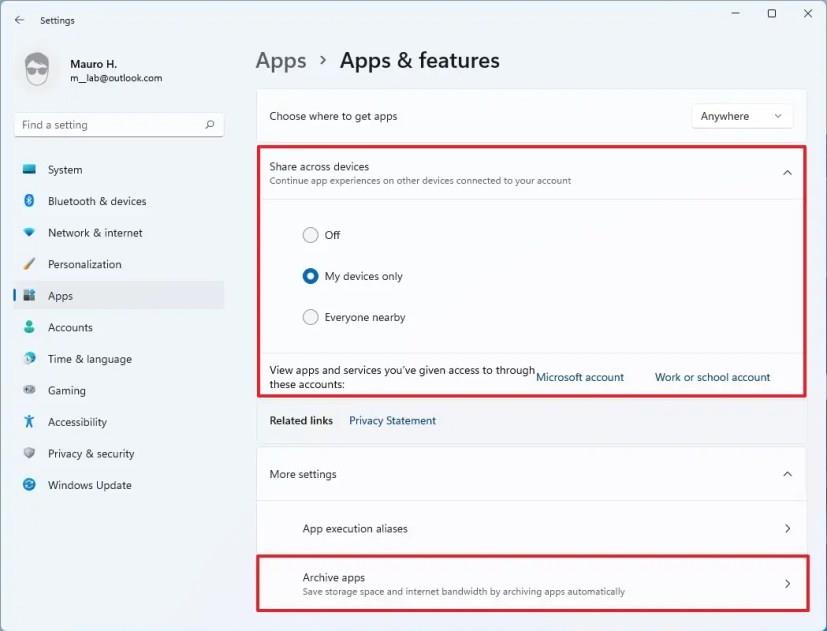
Apps & features settings
When you select “More settings,” you will notice a new Archive apps feature.
The feature is meant to archive apps you don’t often use to save space and internet data. The next time you try to open the app, it’ll connect to the internet and download the full version again. Of course, this is if the app is still available in the Microsoft Store.
Optional features
The Optional features page used to be part of the “Apps & features” page, but it’s now a separate page.
Accounts settings
The Accounts section displays the current user information, OneDrive, and Microsoft Bing rewards details for hero controls. As part of the settings, in this section, you will find the settings for Your info, Email & accounts, Sign-in options, Family & other users, Windows backup, and Access work or school.
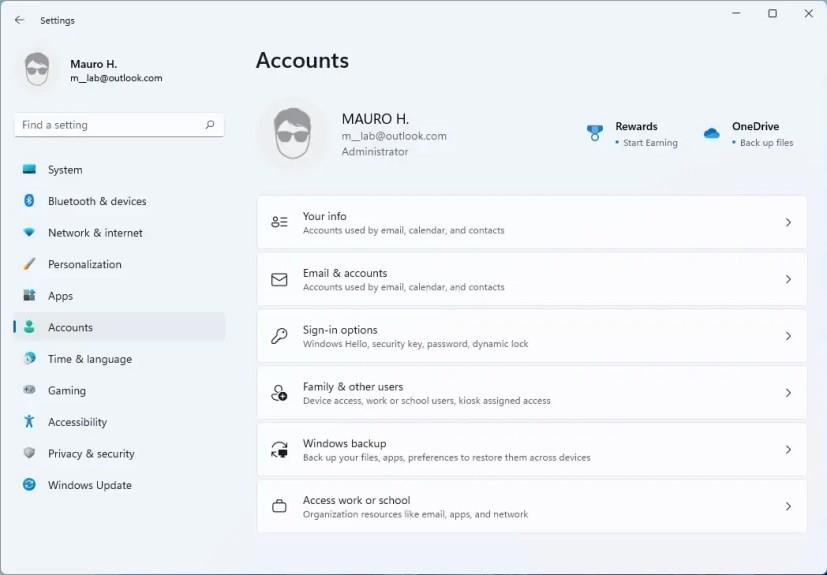
Windows 11 Accounts settings
Windows backup
The Windows backup page is new to Windows 11 and includes the settings to control the OneDrive folder syncing and sync app and system preference settings to the cloud.
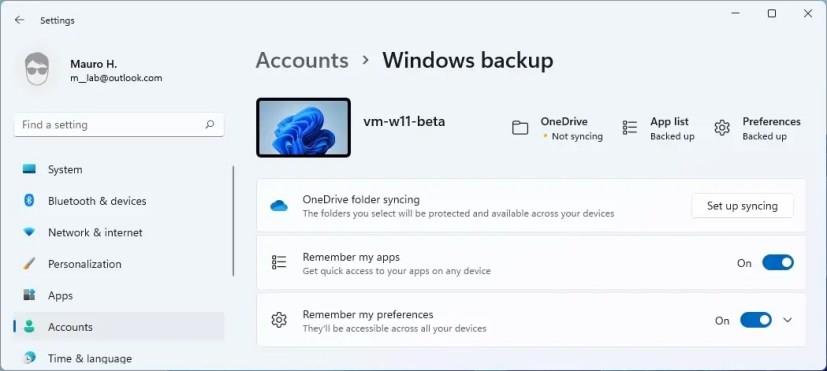
Windows Backup settings
For control heroes, you will see the status for “Preferences,” “App list,” and “OneDrive backup.”
Time & language
The Time & language section includes the settings for Date & time, Language & region, Typing, and Speech pages.

Windows 11 Time & language
Typing
The Typing page isn’t new to Windows 11, but the settings were located in the “Devices” section.
Accessibility
Formerly known as “Ease of access,” the Accessibility section houses the settings Text size, Visual effects, “Mouse pointer and touch,” Text cursor, Magnifier, Color filter, Contrast themes, Narrator, Audio, Captions, Speech, Keyboard, Mouse, and Eye control.
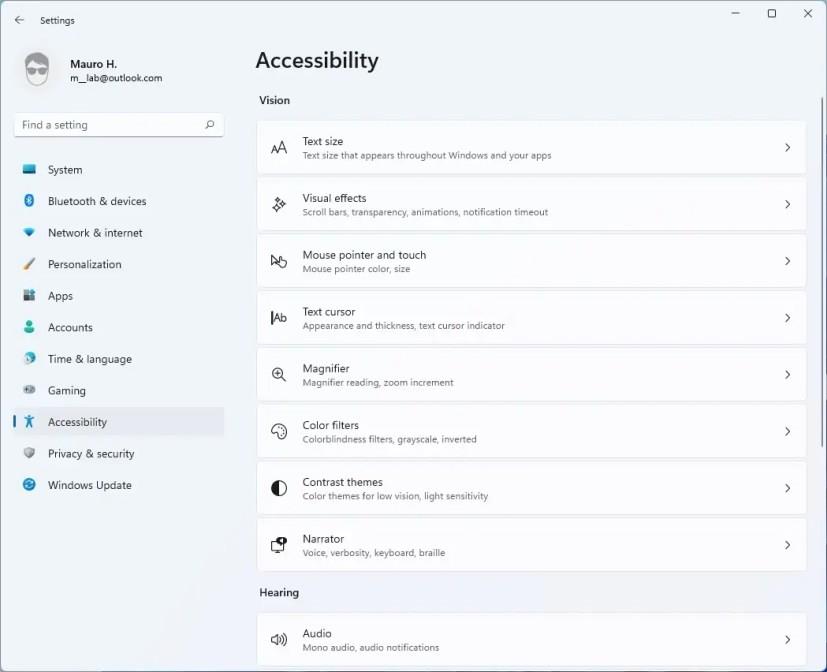
Windows 11 Accessibility settings
Visual effects
The “Display” settings page has now been renamed to “Visual effects,” and the settings are the same as before.
Mouse pointer and touch
The “Mouse pointer” page has been renamed to “Mouse pointer and touch,” and the settings are the same as before.
Privacy & security
On Windows 11, the “Privacy” page has been renamed to “Privacy & security.” This page includes the settings for General, Speech, Inking & typing Personalization, Diagnostic & feedback, and Activity History. Also, in this area is where you will now find Search permissions and Searching Windows pages.
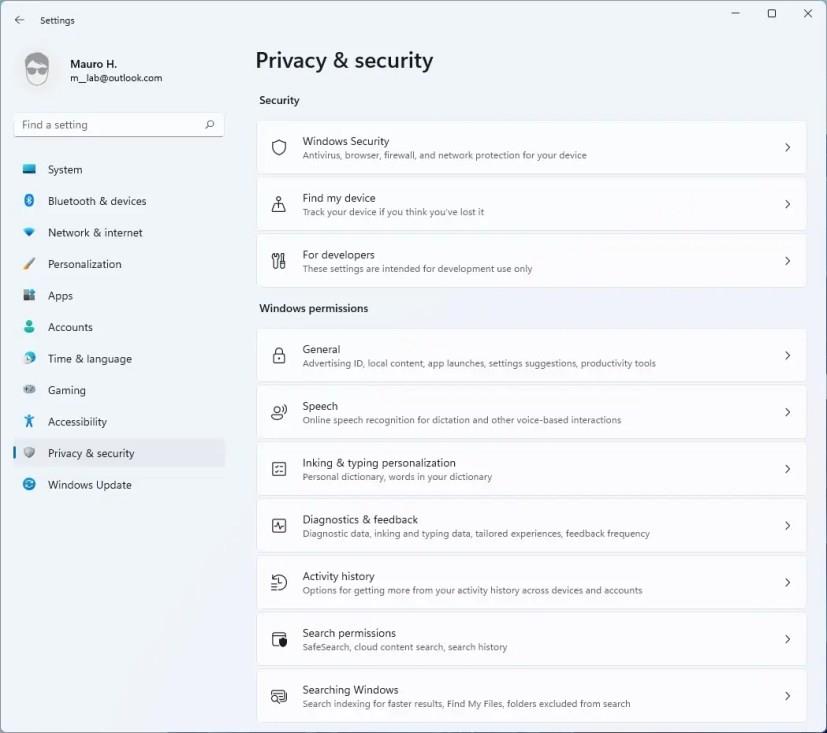
Windows 11 Privacy & security settings
Since this section also includes security settings, you will find the Windows Security, Find my device, Device encryption, and For developers pages.
Screenshot borders
On Windows 11, the Screenshot borders page is new, and it allows you to control if apps can choose to access the screenshot borders.
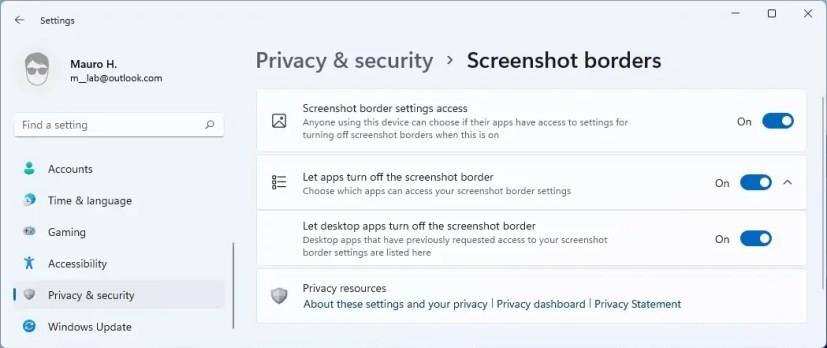
Screenshot borders settings
Screenshot and apps
The Screenshot and apps page is new for this release, and it includes the settings to decide which apps can grab screenshots.
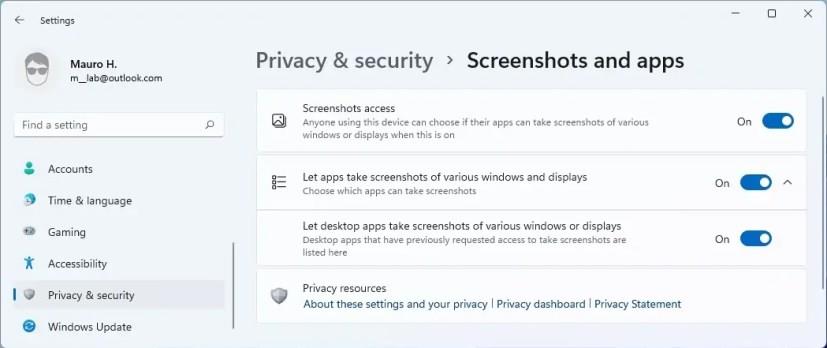
Screenshots and apps settings
Windows Update
The Windows Update section is a new section on Windows 11. The page now includes colorful icons and improvements to communicate the status of updates better. Also, in this section that’s where you will find the settings to view the Update history, access the Advanced options, and enroll a computer in the Windows Insider Program.
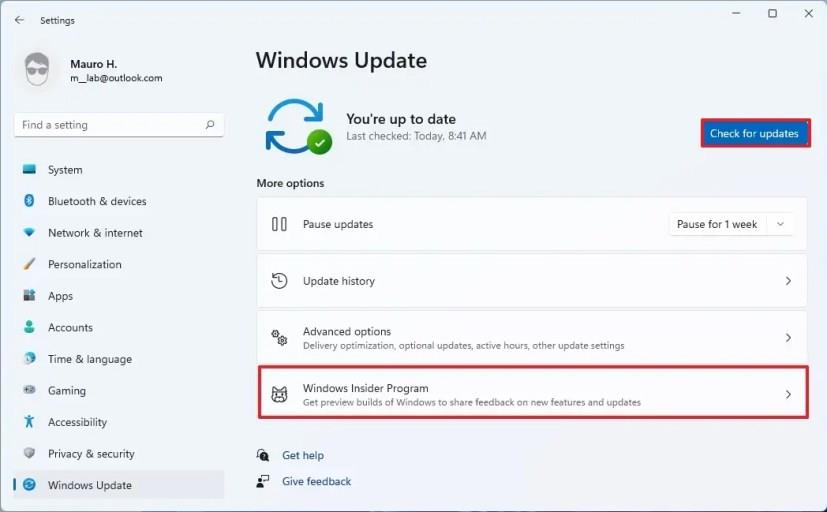
Windows Update settings
In addition, when a new update is ready for your device, the Settings app will inform you how long it will take to apply it. However, this feature is only available for Solid-State Drives (SSD) devices.
Advanced options
The Advanced options page now includes a Configured update policies page that shows all the Group Policy policies currently applied to the device.
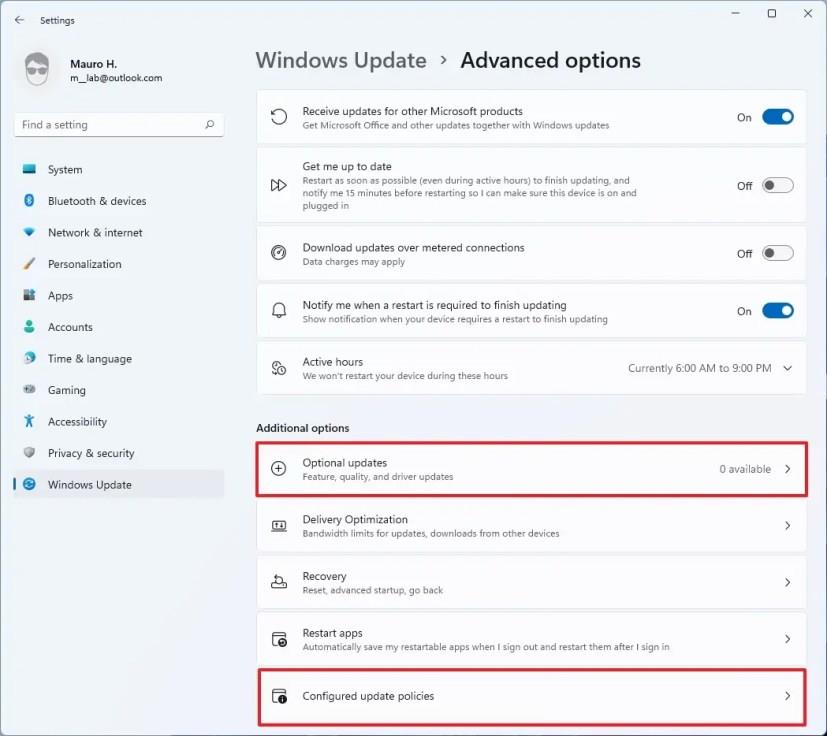
Advanced options
Also, on this page, you find the page to view and install optional updates available for your device.
Language updates
The Scottish Gaelic keyboard now uses AltGr + 7 to input ⁊ (U+204A TIRONIAN SIGNET), pressing’ will now insert the characters, and Alt Gr +’ now acts as a dead key to add the acute accent with a subsequent letter.
Also, when pressing Shift + 6 will now insert ߾ (U+07FE ), and pressing Shift + 7 will now insert ߿ (U+07FF) for the N’Ko keyboard layout.
Japanese IME improvements and touch keyboard
Windows 11 updates the new Japanese IME to support switching between Hiragana and Katakana using CTRL + CAPSLOCK and ALT + CAPSLOCK (respectively), as it was supported with the previous version.
Microsoft is also introducing the “50-on touch keyboard” layout for the Japanese language. This is a popular layout that allows you to input Japanese texts intuitively without knowing how to compose Hiragana characters.
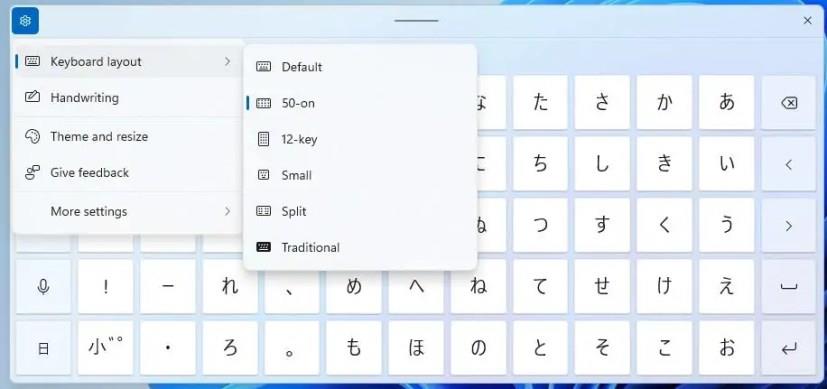
Japanese 50-on keyboard layout
You can use the new layout by clicking the Settings button and selecting the “50-on” option. It also provides alphabet and symbol views newly explicitly designed for the layout.
Input Method Editor (IME)
Microsoft is introducing a new version of all available IMEs that includes a new modern design using the Fluent Design System, including acrylic background, selection visual, and dark theme support.
There are some font adjustments in the candidate interface to minimize intrusiveness while securing visibility. Also, the new design is expanding to more languages.
Also, in this version, Windows integrates the new IME candidate windows design for Japanese, Chinese Traditional, and Indic IMEs.
Korean IME improvements
If you type in Korean, you’ll also find a new version of the Korean IME with improvements in the typing experience.
Windows Subsystem for Linux (WSL) new features
Windows 11 ships with an updated version of the Windows Subsystem for Linux (WSL) that supports the ability to install Linux GUI (graphical user interface) apps as if they were natively installed on Windows.
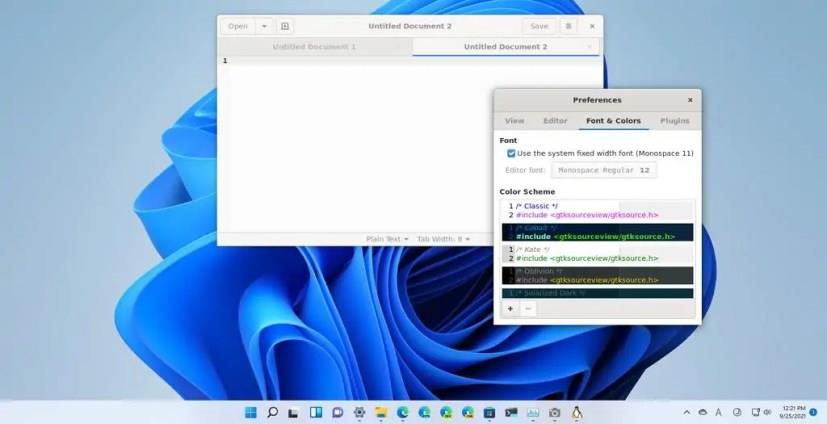
Linux GUI apps on Windows 11
In other words, you can now use your favorite Linux editors, tools, and applications on Windows 11 without the need to switch devices or create a virtual machine.
The feature is meant to develop and test your apps on Linux, but you can use this implementation for any situation. The Linux GUI apps on Windows even include support for speakers and microphones, which means that if you install a media app, the peripherals will pass through and appear in the app. GPU accelerated 3D graphics are also supported to run any app that needs to do complex 3D rendering leveraging OpenGL.
When using this feature, you do not have to run an X server manually since WSL automatically starts a new “companion system distro,” which includes a Wayland, X server, pulse audio server, and all the required components. After you close the app and the WSL session, the system distro will end automatically.
Once the Linux GUI app is installed, it will register in the Start menu, which means that you can launch the app by typing the name on the Windows Subsystem for Linux (WSL) console, or you can launch it like if it was any other application using the Start menu.
If you launch the app from the Start menu, you will find the entry in the “Recently added” list, and you can find it inside the (distro name) folder below the Linux distro entry.
You will also notice that the Taskbar will show the icon with a Linux logo, indicating that you are not running a Windows 11 application.
The experience using a graphical Linux app on Windows 11 feels native, but it’s not. The app renders with all the Linux visual styles for the frame, menus, and other elements, and there is even a shadow around the frame, and every window works independently. However, it is a remote desktop connection, which Microsoft is likely leveraging with the RemoteApp feature built into the operating system.
File Explorer with Linux integration
Also, in WSL, the default path has been changed to \\wsl.localhost\\ from \\wsl\\ to improve reliability and performance. However, you will still be able to use the \\wsl\\ path to access the files.
New WSL install and other changes
The Windows Subsystem for Linux is also getting a few more features, including GPU compute, wsl --install command, and wsl --update command.
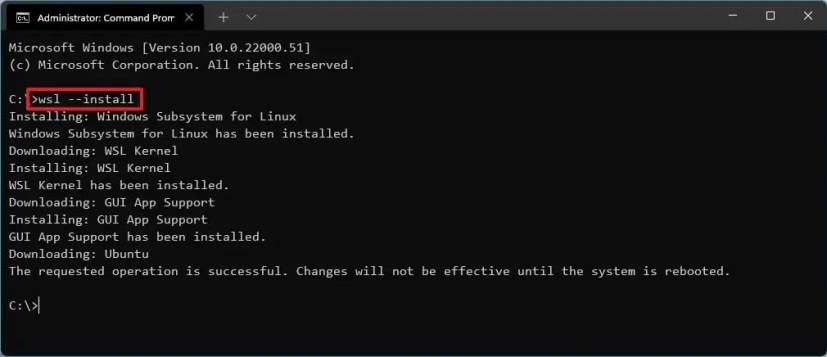
Windows 11 install WSL command
The GPU compute is a feature that allows the Linux binaries to leverage graphics cards, making it possible to perform more machine learning development and data science workflows directly in WSL.
The wsl --install command lets you install the WSL components aster, and the wsl --update command gives you the ability to manage the Linux kernel version used by WSL 2 distros.
The custom Linux kernel from the Windows system image has been removed, and it’s now available through the Microsoft Store.
On Windows 11, you can now attach and mount physical drives inside the Windows Subsystem for Linux distros. The feature enables you to access file systems that are not natively supported (for example, ext4). This means that if you have a dual-boot system with Windows 11 and Linux and are using different drives, you can now access your Linux files from Windows 11.
Also, there is a new option to run Linux commands on the startup of a Windows Subsystem for Linux (WSL) distro.
If you want to use this feature, you will need to edit the /etc/wsl.config file on the distro and adding an option named “command” under the “boot” section.
Windows 11 new system optimization and enhancements
Yes, Windows 11 makes laptops and desktop computers a lot faster. Alongside the redesigned experience and new features, the new version also introduces several under-the-hood improvements to utilize resources better to make the system more responsive.
Snappier and more responsive
For example, under heavy load (even at 90 or 95 percent), Windows 11 will redistribute the compute resources to launch without any lag when launching an app.
This technique also applies to the Windows shell itself, the browser, and your open tabs, but using Sleeping tabs, reducing around 32 percent of memory and 37 percent of processor usage.
When you combine all these new improvements will result in longer battery life and better performance.
Faster resume from sleep mode
Microsoft has also been working to make resume from sleep mode faster. This was possible because of the optimization done for calling hardware components that have to turn on to resume from sleep to improve memory management.
In addition, at the software layer, Windows 11 is making code changes that translate to around 25 percent faster resume times. Using these new techniques, Microsoft claims that most users will resume their devices from sleep “almost instantaneously,” and the device can “stay in sleep state longer and not hibernate as often.”
Faster Windows Hello sign in
Windows 11 also ships with “code optimization” that makes the Windows Hello sign-in process up to 30 percent faster as part of the performance improvements.
Reduced system footprint
Furthermore, Windows 11 reduces the overall footprint. This was done by expanding the use of compression technologies. Also, non-critical built-in apps and other components (such as Microsoft To Do, Sticky Notes, Power Automate) their default state is now “stub” that also reduces the space on the hard drive, background download activity, and download traffic.
And Windows 11 also reduces the storage consumption caused by the system and browser caches.
Smaller and faster updates
After installing Windows 11, you will notice that updates will download and install faster. This is because Windows includes several optimizations to the update engine, which improves how updates are packaged.
For example, when a new update is released, Windows 11 will compare the components available in the computer and then only pulls down the necessary changes, making updates up to 40 percent smaller.
Also, instead of two, Microsoft is now planning to only release one feature update per year.
First-run experience
The new OS introduces a new first-run experience using the updated “Tips” app to highlight the most significant changes after a major feature update installs on the device. (This feature replaces the Microsoft Edge welcome page after installing a new feature update to help users better understand the features and changes and how to use them.)
Registry
The Registry is not getting significant changes, but the app now supports CTRL + Backspace to delete words at a time in the Find window, renaming a key, and other places.
Tablet experience
To avoid confusion, Microsoft is removing the tablet mode quick action button from non-touch devices. In other words, only touch-enabled devices will be able to switch to the touch experience.
There is a new logic for devices with a touch screen to allow users to boot into the appropriate mode according to their mode and whether the keyboard is attached.
Windows 11 changes the tablet posture logic for convertible devices to apply when using a single screen only.
Also, when removing the keyboard, you will notice more separation between icons, making it easier to touch. The buttons and other targets on windows are now bigger. The second window will snap on top of the other window when you snap two windows in portrait mode. Windows 11 now supports the same touch gestures when using a trackpad. For example, you can now swipe with three fingers down to minimize the windows on the screen.
Microsoft is also introducing new touch gestures to switch between apps and desktops with smooth transitions.
The gestures are like the touchpad gestures but have thoughtful improvements explicitly designed for touch. Here’s a list you can try:
Three-finger gestures:
Four-finger gestures:
In addition, there is a new pen menu that you can open by clicking the pen icon at the lower right on your taskbar.
If you use a pen, there’s now support for haptic feedback, and Windows 11 has a new touch keyboard with support for themes and other customization, as mentioned earlier in this guide.
Windows 11 x64 emulator
Windows 11 also introduces a new x64 emulator that allows ARM-based devices to install and run x64 applications from the Microsoft Store or external sources.
Reset apps with PowerShell
This new version of Windows includes the ability to reset Universal Windows Platform (UWP) apps using a PowerShell command. This is an addition to the option to reset apps from the Settings app. For instance, this command resets the Calculator app: Get-AppxPackage *calculator* | Reset-AppxPackage.
This new option will become handy to reset specific system components that are not available in Settings, such as the Start menu.
Wi-Fi
As part of the networking improvements, Windows 11 now comes with support Wi-Fi 6E.
SMB Compression
On Windows 11, “SMB compression” is a feature designed to request file compression during a transfer over the network. The idea of this feature is to make file transfers fasters and reduce bandwidth for large files without having to compress files at the source and then decompress the contents at the destination.

SMB compression
You would see the benefit of this type of compression on networks with less bandwidth, for instance, on computers or servers with 1Gbps Ethernet or Wi-Fi adapters. However, if you have two servers with 100Gbps network adapters with Solid-State Drives (SSDs), you may not see the benefit. In practice, it may even take more time.
Compression with SMB on Windows 11 supports algorithms XPRESS (LZ77), XPRESS Huffman (LZ77+Huffman), LZNT1, or PATTERN_V1*. XPRESS is used automatically, SMB signing and SMB encryption, SMB signing and SMB encryption, and SMB Multichannel, but it doesn’t support SMB Direct over RDMA.
Windows 11 DiskUsage command tool
Windows 11 also comes with DiskUsage, a new command-line tool that allows you to quickly analyze the contents of a given folder (or the entire drive) to understand how space is being used and find out the files that are taking the most storage, which can come in handy when trying to free up space.
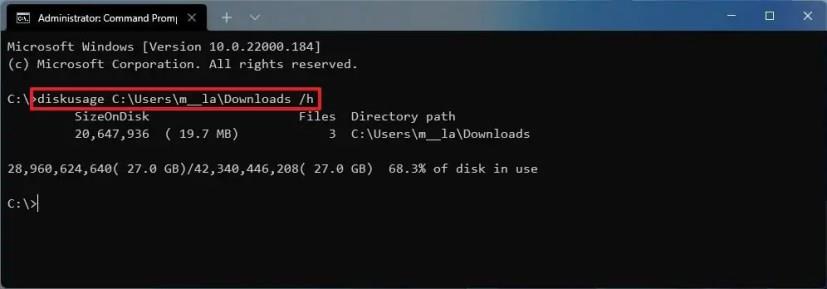
DiskUsage
The tool includes many options to customize the report details. For instance, the /minFileSize command can help to find files equal or larger of the size you specified. The /u and /t let you see the top files for a specific location and many other options.
Redesigned out-of-box experience (OOBE) for Windows 11
Windows 11 is introducing a new out-of-box experience (OOBE). This is the experience you usually go through to complete the initial setup of the operating system with a new account, privacy settings, and custom preferences when setting a new device or after a clean installation.
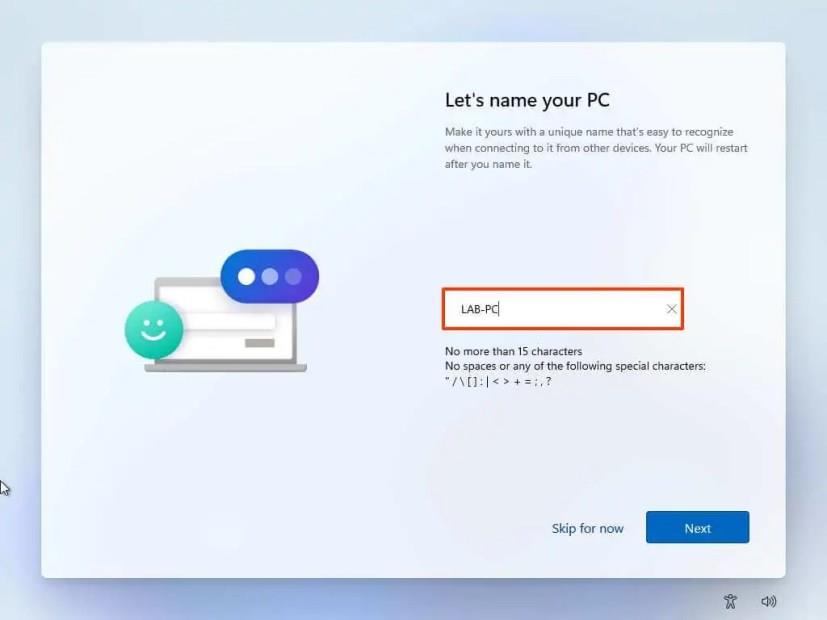
Windows 11 OOBE
The new experience moves away from the blue and dark colors in favor of white and gray colors with a more intuitive and friendly interface to match the new modern design language of Windows 11.
You will also find new animations as you move through each page. Microsoft is even adding an option to set the computer name as you complete the setup in this new version. The option to create an online account is now buried inside the “Sign in options” page, and when setting up Windows 11 Home, users will be required to have an internet connection, and they will be forced to create an account with a Microsoft account. However, there’s a workaround to skip the requirement and continue with an offline account.
Redesigned and new built-in Windows 11 apps
As part of the new Windows 11 overhaul, Microsoft is also updating many of its inbox apps like the Microsoft Store, Paint, Calculator, Clock, Tips, and Snipping Tool, and introducing a few more new apps, such as Power Automate and Chat from Microsoft Teams.
Microsoft Store
Perhaps one of the biggest improvements on Windows 11 is the addition of the new Microsoft Store app. The app has been redesigned with a new interface and animations, making it easier to search and discover content. When you first open the app, you will notice that the search box is centered at the top, and the navigation now appears on the left side.
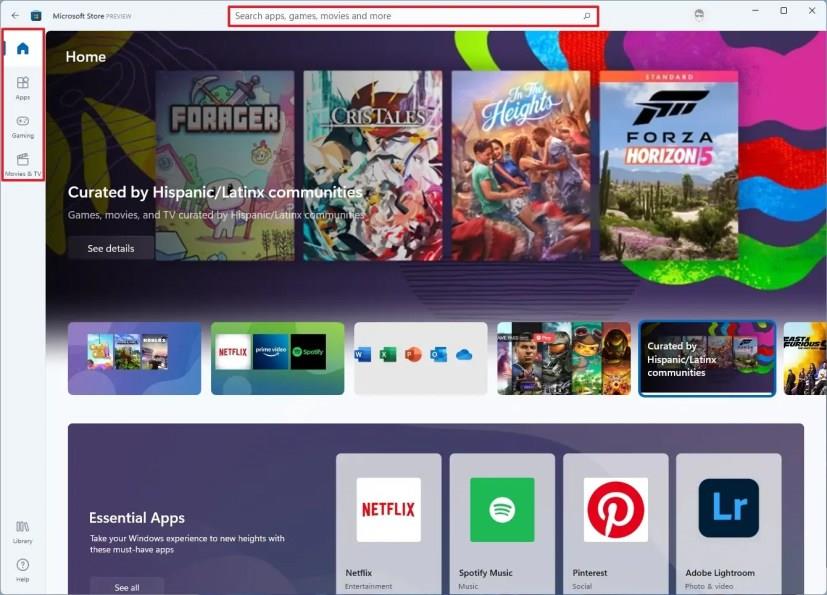
Microsoft Store UI
You still have most of the same categories, including Home, Gaming, Movies & TV, Library, and Help, but the Deal tab is gone.
The product page for apps has also been updated with a new layout that makes it easy to download and install from the left side, while the pages for games, movies and shows will include a vertical orientation.
The “Library” tab that’s where you can go to check for updates. In this section, you will also find a list of all the apps and other content you own across devices.
Finally, the Microsoft Store will now allow developers to make available any type of apps, including traditional Win32, .NET, and web apps. Also, developers now have the option to bring their own monetization platform to keep all the revenue, but the option to use the Microsoft commerce service will still be available.
Get Started
In this new version, Get Started is a new app to help beginners get set up quickly. The app is basic, and it shows things like how to get started with File Explorer, downloading apps, navigating the interface, and going through some basic features.
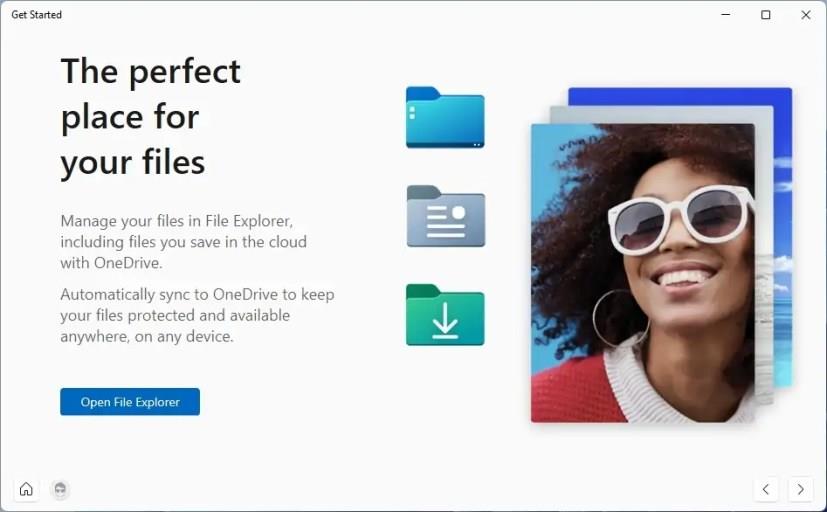
Windows 11 Get Started app
Tips
İpuçları uygulaması da güncellendi ve Başlarken'e benzer bir uygulamadır, ancak Windows 11'in nasıl kullanılacağı hakkında daha fazla bilgi edinmek için ipuçları içerir. Uygulama önceki sürümlerde mevcuttu ancak şimdi yeni tasarım diliyle eşleşen bir arayüz sunuyor . ve yüzden fazla yeni ipucu içerir.

Windows 11 İpuçları uygulaması
Hesap makinesi
Hesap Makinesi uygulaması da bir güncelleme alıyor. Yeni sürüm C# ile yeniden yazılmıştır ve yuvarlatılmış köşeler ve yeni malzemelerle Microsoft'un yeni tasarım dilini takip eden yeni bir görünüm sunar.
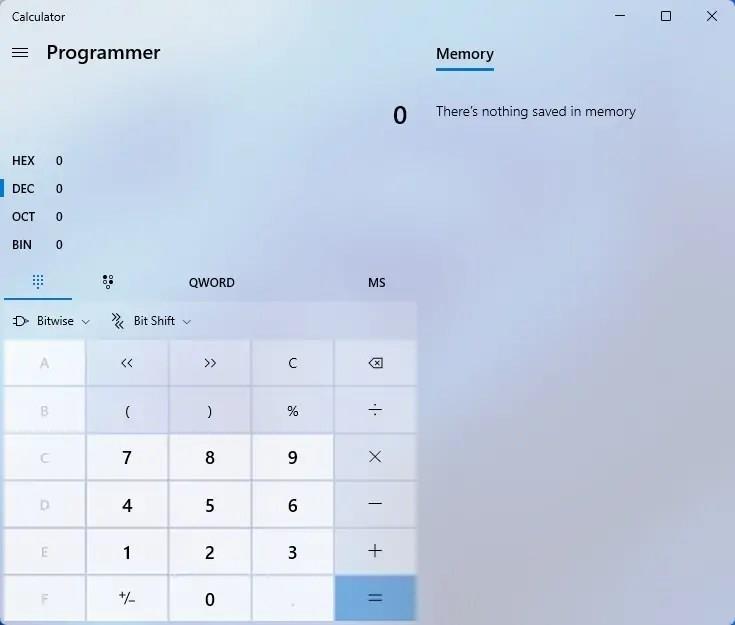
Windows 11 Hesap Makinesi uygulaması
Şirket, bu sürümdeki standart hesap makinesi ve güçlü bilimsel hesap makinesi için uygulamayı basitleştirmeye odaklandı.
Ayrıca Programcı Modu , programlama ve mühendislik için gerekli olan zengin işlevsellik sunar. Bir veya daha fazla denklemi grafik modunda çizin ve ardından “x-” ve “y-” kesişimleri gibi temel grafik özelliklerini tanımlamaya yardımcı olması için grafiği analiz edin. Ve artık 100'den fazla farklı birim ve para biriminde dönüştürme yapabilirsiniz.
Saat
Windows 11'de, "Alarms & Clock" uygulaması yalnızca "Saat" olur ve yeni adla birlikte uygulama, yuvarlatılmış köşeler ve yarı saydam malzemelerle yeni bir arayüz alır. Ayrıca, bu yeni sürüm, kullanıcıların görevlere ve işlere odaklanması için yeni bir yol olması amaçlanan Focus Sessions ile birlikte gelir.
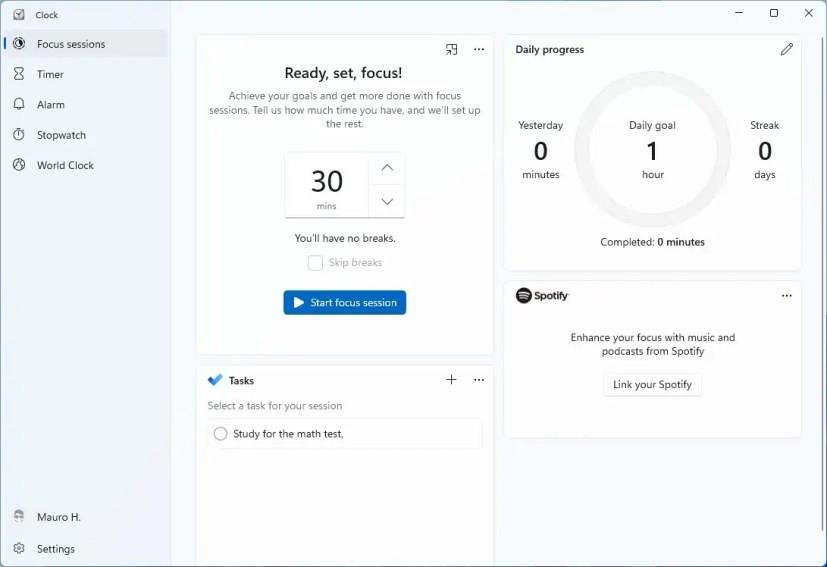
Odak oturumlu saat
Focus Sessions, Spotify ile bütünleşerek, odaklanmak ve işinizi halletmek için favori müzik çalma listenizi çalarken oturumlar oluşturmanıza olanak tanır.
Çalışma şekli, Alarmlar ve Saat uygulamasını açar ve sol bölmeden Odak Oturumları'nı seçersiniz. Ardından bir "Microsoft Yapılacaklar" görevi seçer, bir Spotify çalma listesi seçer, zamanlayıcıyı ayarlar ve "Odak oturumunu başlat" düğmesini tıklarsınız.
Ayrıca, seçtiğiniz zaman aralığına bağlı olarak, bir dizi otomatik mola alacaksınız ve tüm odak seanslarınız sağ taraftaki "Günlük ilerleme" bölümünde izlenecek.
Fotoğraflar
Yeni Fotoğraflar uygulaması, şirketin WinUI kullanarak işletim sistemiyle uyguladığı tasarım dilini takip eden modern bir arayüze sahip.
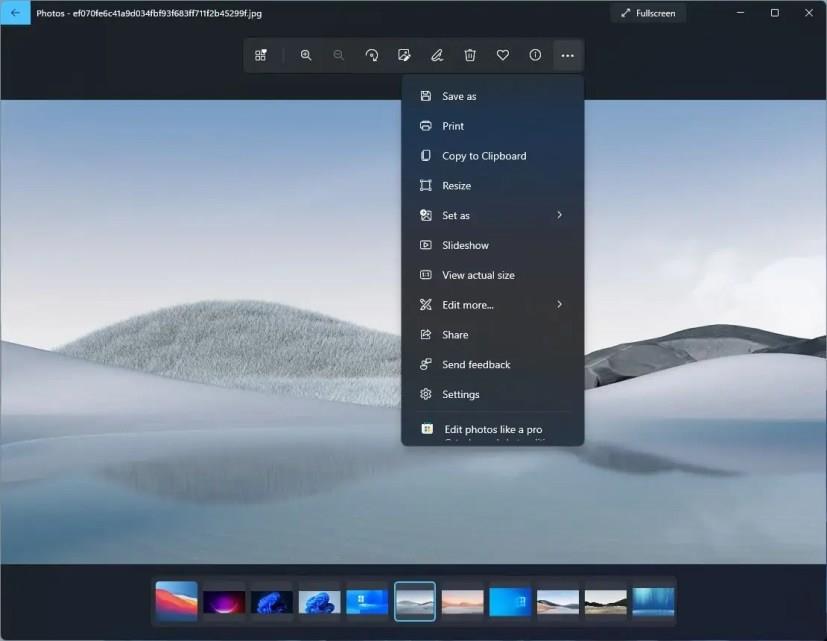
Windows 11 Fotoğraflar uygulaması
Uygulama aynı klasik görünümü ve hissi koruyor, ancak kullanıcıların resimlerini düzenlemesini ve düzenlemesini kolaylaştıran değişiklikler içeriyor.
"Fotoğraflar" yine aynı beş kategoriye sahiptir: Koleksiyon, Albümler, Kişiler, Klasör ve Video Düzenleyici. Şimdi bir resim seçmek, uygulamanın tüm tuvalini alarak açılacak ve kayan öğeler, komutlara erişmenizi sağlayacaktır. Alt tepsi, bir grup resmi görüntülemek ve düzenlemek için seçebileceğiniz ek resimleri ortaya çıkaracaktır.
Komut çubuğu artık resme açıklama eklemenizi sağlayan bir "İşaretleme" aracı içeriyor.
Ekran alıntısı aracı
Microsoft, eski uygulamayı kaldırmak yerine, Windows 11'de ekran görüntüsü almak için yeni bir tek uygulama oluşturmak için modern Snip & Sketch uygulamasını eski Snipping Tool ile birleştiriyor .
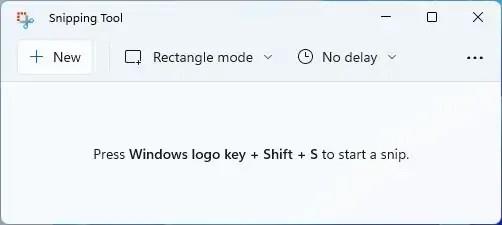
Windows 11 Ekran Alıntısı Aracı uygulaması
Yeni Snipping Tool, eski sürümle aynı tanıdık görünümü koruyor, ancak arayüz, Windows'un görsel tasarım dilini takip edecek şekilde modernize edildi.
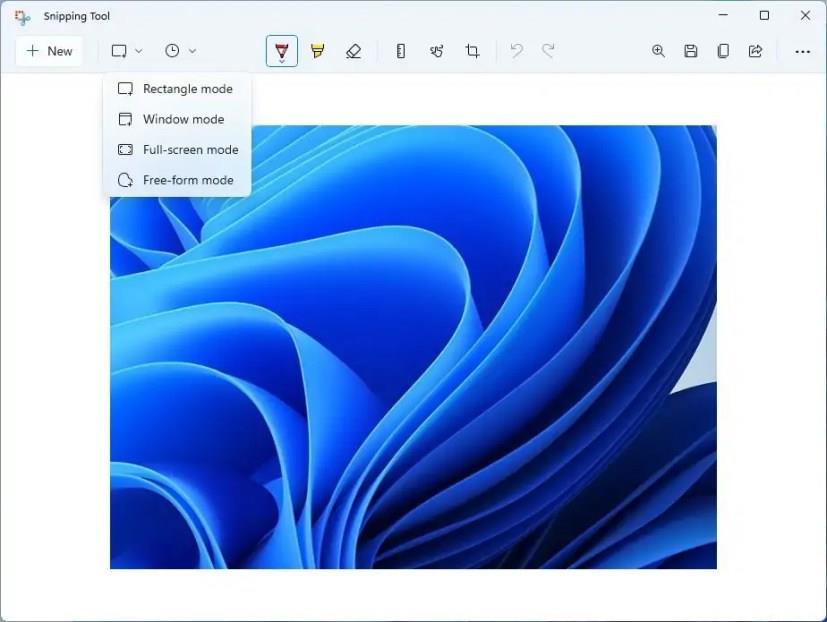
Ekran Alıntısı Aracı düzenleyicisi
Ayrıca uygulama, Snip & Sketch uygulamasında bulunan en iyi özellikleri sunar. Örneğin, yeni uygulamayı açtığınızda, Windows 11 görsel öğeleriyle aynı tanıdık tasarıma sahip olacaksınız ve ekran görüntüsü alırken ekran görüntüsünü düzenlemek ve açıklama eklemek için Alıntı ve Taslak araçlarını alacaksınız.
Posta ve Takvim
Windows 11, yeni Posta ve Takvim uygulamalarını içerir. Yeni uygulamalar yalnızca yuvarlatılmış köşeleri ve diğer görsel ince ayarları entegre ediyor, ancak önceki sürümlerle neredeyse aynı kalıyorlar.
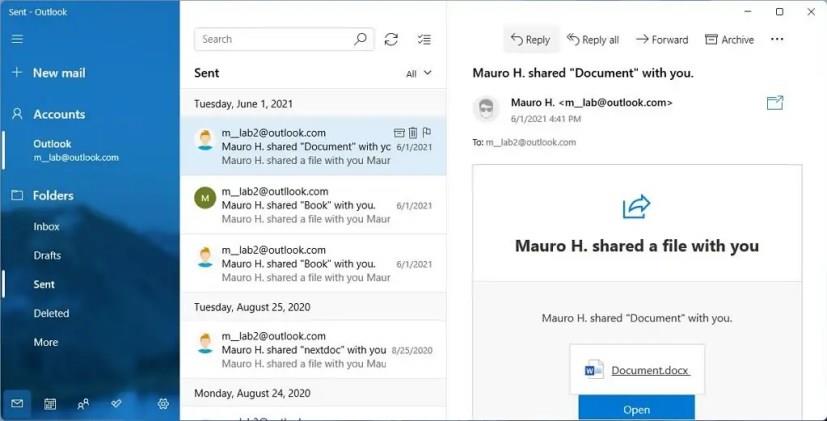
Windows 11 için posta uygulaması
Microsoft Teams'den sohbet
Microsoft ayrıca Teams'i Windows 11'e entegre ediyor, ancak bu tam sürüm değil. Bunun yerine özellik, Microsoft Teams'den Sohbet olarak bilinir .
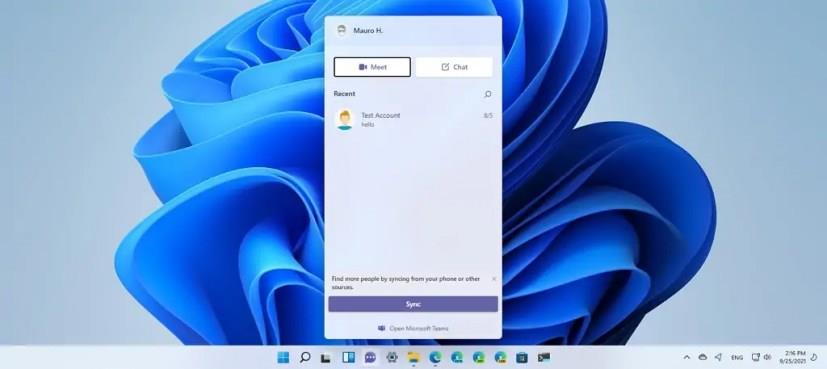
Microsoft Teams için sohbet
Bu özellik, bire bir veya grup sesli ve görüntülü aramalar yapmanızı sağlar. Toplantılar oluşturabilir ve toplantılara katılabilirsiniz. Mikrofonu ve kamerayı açıp kapatabilirsiniz. Tercih ettiğiniz hoparlörleri, mikrofonu ve kamerayı seçebilirsiniz. Ekranınızı paylaşabilirsiniz. Toplantı ayarlarını yönetebilir, katılımcı listesini görüntüleyebilir, lobiden toplantı katılımcılarını kabul edebilir, sohbet edebilir ve galeri görünümünde kişilerin videolarını görebilirsiniz.
Bu özellik, Görev Çubuğundan kolayca edinilebilir ve Windows, iOS veya Android dahil olmak üzere platformdan bağımsız olarak birine bağlanabilirsiniz.
Güç Otomatikleştirme
Power Automate , tekrarlayan görevleri otomatikleştirmek için tıklamalar ve klavye girişi gibi kullanıcı arabirimi eylemlerini taklit ederek web ve masaüstü uygulamalarını otomatikleştirmenize olanak tanıyan yeni bir uygulamadır .
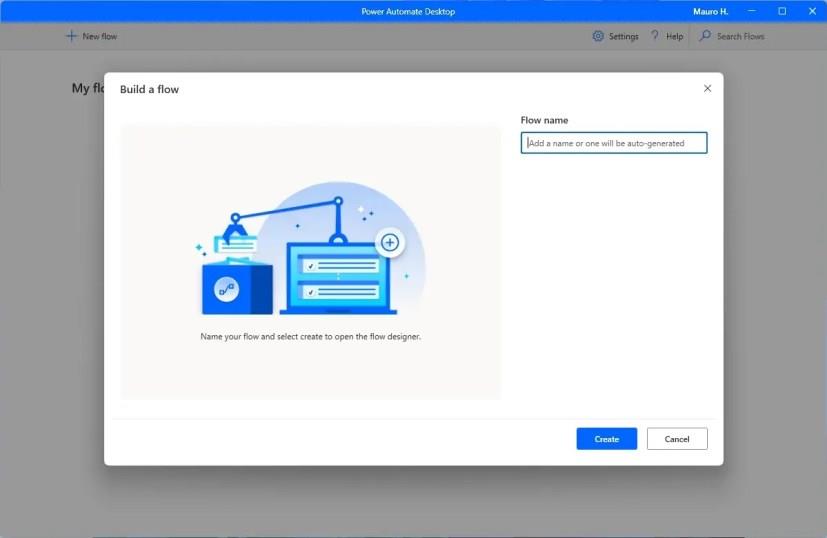
Windows 11 Power Automate uygulaması
Çözüm
Genel olarak, Windows 11, çok ihtiyaç duyulan bir arabirim yükseltmesini tanıtan ve birçok yeni özellik ve iyileştirme sağlayan harika bir yeni işletim sistemidir. En son sürüm çok kararlı görünüyor ve Windows 10'u temel aldığı için çoğu sürücü ve uygulama bu yeni sürümde çalışmalı.
Ancak, bu sürümle ilgili bazı uyarılar var. Örneğin, deneyim boyunca yeni tasarım diline güncellenmemiş menüler ve öğeler gibi birçok arayüz tutarsızlığıyla karşılaşmaya devam edeceksiniz. Ayrıca, Denetim Masası ve Görev Yöneticisi ve Aygıt Yöneticisi gibi güncellenmemiş diğerleri gibi hala mevcut olan birçok eski araç var.
Gezinirken ve görevleri gerçekleştirirken Windows daha hızlı ve kararlı hissediyor, ancak hala birçok tasarım hatası veya eksik şey var. Ayrıca, ilk kullanıma sunma aşamasında, Android uygulamaları desteği gibi birçok özellik Windows 11'in parçası olmayacak.
Bu sürümle ilgili önemli sorunlardan biri, önemli ölçüde daha yeni işlemciler ve TPM 2.0 ve Güvenli Önyükleme gibi güvenlik özellikleri gerektiren sistem gereksinimlerindeki artıştır .
Tüm iyi ve kötüleri göz önünde bulundurarak, Windows 11, derecelendirme için 5 üzerinden 3,5 yıldız alır .
Microsoft, Windows 11'in ilk beta sürümünü zorluyor.
Güvenlik araştırmacısı, Microsoft'un bug bounty programında aldığı düşük ödeme nedeniyle Windows 11'deki sıfır gün güvenlik açığını açıkladı.
Microsoft, Windows'un yeni sürümlerini her yıl bir yerine ÜÇ YILDA BİR yayınlarken, birkaç ayda bir özellik sunar.
Windows 11 etkinliği, 24 Haziran'da 11:00 ET / 08:00 PT'de başlıyor ve bu Microsoft web sitesi için canlı olarak izleyebileceksiniz.
Dosya Gezgini, kullanıcıları Windows 11'de Microsoft 365 aboneliği almaya zorlamak için reklamlar alabilir, deneysel özellik 22572 derlemesinde görünür.
Microsoft, Windows 11'e gelen yeni özellikleri göstermek ve işletim sistemini ticari müşterilere satmak için 5 Nisan'da bir karma çalışma etkinliği düzenlemeyi planlıyor.
Başlat menüsünde gezinme hareketi, Hızlı Ayarlar, animasyonlar ve tutucu da dahil olmak üzere Windows 11'e yeni dokunma hareketleri geliyor.
Windows 11'in yeni özellikleri arasında duvar kağıtları için Etiketler, Tablet modu ve Bildirimler ile ilgili ince ayarlar ve Sürdürülebilirlik gücü iyileştirmeleri yer alıyor.
Windows 11, tek bir komut kullanarak Linux 2 için Windows Alt Sistemini hızlı bir şekilde kurmak için güncellenmiş bir WSL komut aracı içerir. İşte nasıl.
Dosya Gezgini, tarayıcıda olduğu gibi SEKMELER için destek alır ve Windows 11'de soldaki yeniden tasarlanmış gezinme bölmesi. Ayrıntılar burada.
Microsoft, Windows 11 oyun deneyimini iyileştirmek için pencereli oyunlar için Optimizasyonlar ve yeni Windows HDR Kalibrasyon uygulaması getiriyor.
Windows 11 Görev Çubuğu artık Pencere Öğeleri simgelerinde dinamik bildirimler (hava durumu, spor, finans, son dakika haberleri) gösterebilir. Ayrıntılar burada.
Windows 11'in bilgisayarınızda çalışıp çalışmayacağını belirlemek için PC Sağlık Kontrolü uygulaması, 5 Ekim lansmanından önce resmi olarak indirilmeye hazır.
Microsoft, Görev Çubuğu konumunu üst, sol veya sağ olarak değiştirme seçeneğinin yakın zamanda Windows 11'e gelmeyeceğini açıklıyor.
Windows 11, daha yavaş NVMe sürücülerinin Windows 10'dan daha yavaş çalışmasına neden olan bir soruna sahiptir ve Microsoft, sorunu henüz onaylamadı ve düzeltmedi.
Microsoft, işletim sisteminin bir sonraki sürümünün adı olarak Windows 11'i anlatan 11 dakikalık bir video yayınlıyor.
Windows 11, performans sorunlarına neden olabilecek bir bellek sızıntısı sorunuyla ortaya çıkıyor ve hatanın Dosya Gezgini'nde olduğu görülüyor.
Windows 11'in kaldırılan veya kullanımdan kaldırılan özellikleri arasında Cortana, Başlat menüsü ve görev çubuğu, Tablet modu, Zaman Çizelgesi ve daha fazlası bulunur. İşte tam liste.
Artık yerel perakende mağazanızdan Windows 11 Home veya Pro'nun fiziksel bir kopyasını satın alabilirsiniz. Kutu, bir USB ortamı ve ürün anahtarı içerir.
Kuruluş verilerinizi belirli bir uygulamaya yapıştıramıyorsanız, sorunlu dosyayı kaydedin ve verilerinizi yeniden yapıştırmayı deneyin.
Microsoft Rewards ile Windows, Xbox ve Mobile platformlarında nasıl en fazla puan kazanabileceğinizi öğrenin. Hemen başlayın!
Windows 10
Skyrim'in sinir bozucu sonsuz yükleme ekranı sorununu çözerek daha sorunsuz ve kesintisiz bir oyun deneyimi sağlamanın etkili yöntemlerini öğrenin.
HID şikayetli dokunmatik ekranımla aniden çalışamaz hale geldim. Bilgisayarıma neyin çarptığı konusunda hiçbir fikrim yok. Eğer bu sizseniz işte bazı düzeltmeler.
PC'de canlı web seminerlerini kaydetmenin yararlı yollarını öğrenmek için bu kılavuzun tamamını okuyun. Windows 10, 8, 7 için en iyi web semineri kayıt yazılımını, üst ekran kaydediciyi ve video yakalama araçlarını paylaştık.
iPhone'unuzu bilgisayara bağladıktan sonra karşınıza çıkan açılır pencerede yanlışlıkla güven butonuna tıkladınız mı? Bu bilgisayara güvenmemek istiyor musunuz? Ardından, daha önce iPhone'unuza bağladığınız bilgisayarların güvenini nasıl kaldıracağınızı öğrenmek için makaleyi okuyun.
Ülkenizde akış için mevcut olmasa bile Aquaman'i nasıl yayınlayabileceğinizi bilmek ister misiniz? Okumaya devam edin ve yazının sonunda Aquaman'in keyfini çıkarabileceksiniz.
Bir web sayfasını kolayca PDF olarak nasıl kaydedeceğinizi öğrenin ve web içeriğini çevrimdışı erişim ve paylaşım için taşınabilir PDF dosyalarına dönüştürmek için çeşitli yöntem ve araçları keşfedin.
PDF belgelerinize not ekleyin - Bu kapsamlı kılavuz, bir PDF belgesine farklı yöntemlerle not eklemenize yardımcı olacaktır.
